
















While killing two birds with one stone is challenging for some, one woman is defying those odds.

Karen Samuels moved to Canada from Jamaica at the age of three. At a young age, it wouldn’t have been easy for her to describe the transition from one country to another. However, as an adult, she now views the transition as confusing.
Samuels had these feelings, because she felt she was losing her two central male role models present in her life. These two role models were her father and her late grandfather. Although she moved to Canada with her grandmother, she moved in with her mother, who had left her when she was six months old. This change made her feel like she was losing her grandmother as well.
Samuels describes she felt pushed towards having a relationship with a woman who was supposed to be a mother to her. Unfortunately, Samuels’s mother was never a mother to her. She never felt any love from her, and the love disappeared the moment she met her.
Samuels became a victim of colorism and featurism at the hands of her mother, and it played a role in her struggles with mental health. She knew there was a mental health issue when she was eight. However, she didn’t fully realize it until she turned 46.

Anxiety was the first mental health issue Samuels experienced. She would forget where she was and what she was doing. From there, it led to confusion because she didn’t talk about her issues with anger, lack of self-love, wanting to be someone else, and thinking she wasn’t worthy enough - all of this because of the lack of a mother’s love.
Years of professional therapy and understanding that it’s normal to find help is how Samuels overcame her struggles with mental health. She also uses her passions to help deal with her mental health struggles: staying physically active, maintaining an organized space, and music are some of her passions, and the ability to self-reflect has become

a life changer for her. Cleaning helps her declutter the negative thoughts she has in her head. Going to the gym helps her release feelings. The most important one will be for her to acknowledge a problem and what she can do to overcome it.
The biggest thing she has done as a mental health advocate was to put herself on a platform and showcase relatability. Through this, Samuels has shown that not everyone who suffers from mental issues has an addiction or is incapable of moving past it.
She did not have any advocacy for mental health when growing up, so Samuels advocates for individuals who are dealing with mental health challenges; something that she wished would have been done for her when she was growing up.
“I had a lot of misconceptions on what anything mental meant,” said Samuels. She said there would be a lot of negative labels and stigmas she did not want to be associated with, and upon realization that these misconceptions were false, Samuels put herself out there for others to be able to see that anything was possible, it just took working on yourself.
“We can get through this together,” she said.
Within the Black community, there is a stigma surrounding mental health. Samuels’ advice is for people to acknowledge that if something does not feel right, to deal with the feelings that come with it. Acknowledging a problem shows courage and strength. The weakness is when one hides it and doesn’t get help.
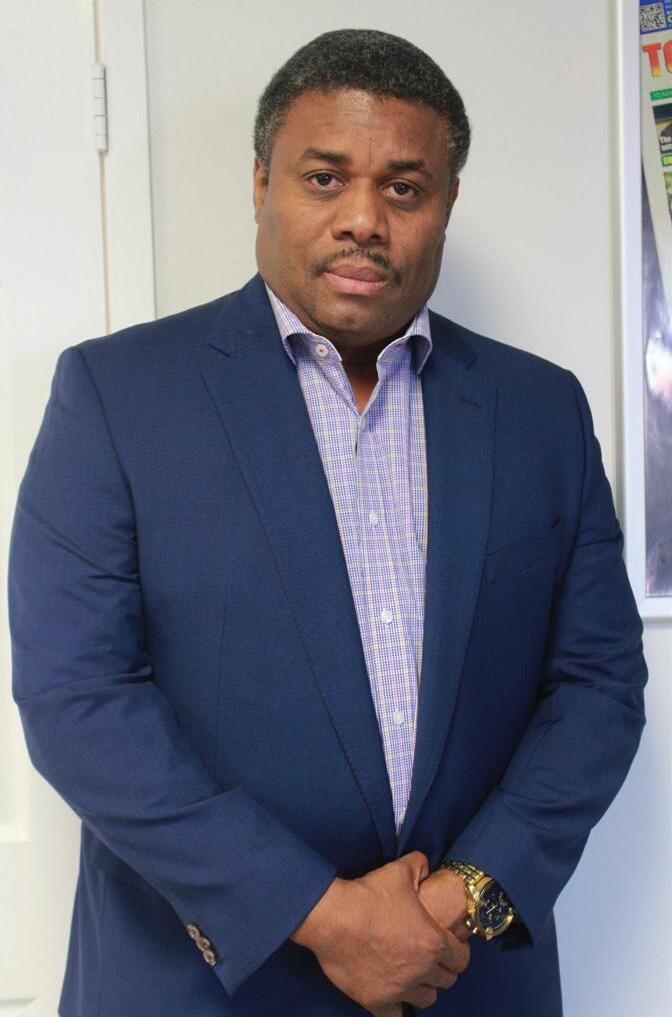
As a mental health advocate, she enjoys giving someone the courage to share their story and relate to them. Samuels would like to do more public speaking on mental health in any setting for people of all ages. She is also in the process of piecing together her story to share with the community.
As someone who grew up in the Jane and Finch area, Samuels likes to give back and prove not everyone in the neighborhood is a criminal. Her fondest memory of being in
the area was feeling a sense of community. Samuels misses how everyone knew each other and looked out for one another.
“The whole community was a family,” said Samuels, “It is not something that you witness anymore.”
Samuels would like to see the Jane and Finch community revert to how it was when she was a child.

She wants more recreational options for kids besides basketball and track and field for example: horseback riding, gymnastics, and skating. “Just something different from the norm for that neighborhood,” she said.
Samuels shared with me about the time that she lost everything and ended up at a woman’s shelter. There she met other women who experienced the same issues. They were in a situation where all they needed was some help. Despite the challenges, Samuels overcame her homelessness by accepting the help she needed. Her time in a women’s shelter is what inspired her to want to give back.
The first giveback happened in December 2021 at the Driftwood Community Centre. She raised $7,500 for: gift cards, food, and clothing. Last year’s giveback happened at the Jane and Finch Mall and raised over $12,000. Samuels also volunteers with: Seva Food Bank, Young Bosses in Business, and Peel and Toronto Police.
It is important that we as a community recognize the work of someone like Karen Samuels; it is heroines like her that keep our community to -
Photo Credit: Ric Mathis @ricmathis Photo Credit: Lady Mensah Photo Credit: George Pimentel Photo Credit: Evermore Media Photo Credit: Myles “Jay” Joseph Photographer: Phillip Millerin the world?
Every day, millions of families across the United States confront a problem that undermines their ability to study, work, or participate vibrantly in their communities. These millions of families do not have enough to eat on a regular basis, a problem known as “food insecurity.”
You wake up with a familiar rumbling, growling sensation in your stomach. You know that there is nothing in the fridge to feed yourself, and right next door is a room with two little ones who you know you will not be able to feed either.
You send them off to school, and rush to work. Hopefully you can pull something off and be able to feed them later on. Throughout the day you are irritable, have difficulty concentrating, and you feel lethargic. Well of course you do; you need food to fuel you.
You were able to grab something small that you can share for dinner. Together you share a box of macaroni and cheese, drink some water, and head to bed. There are tears in your eyes as you lay your head on your pillow. Why has it become so hard; you live in one of the richest countries
There is a significant and growing crisis of food insecurity in the U.S., where 24.6% of families lack reliable access to nutritious food. That is especially true in New York City and its borough of Queens. The rate of food insecure children increased from 13.8% in 2019 to 20.5% in 2020.
Food insecurity, as defined by the U.S. Department of Agriculture (USDA), means “the disruption of food intake or eating patterns because of lack of money and other resources.”
According to the USDA, the rate of food insecurity among children in Queens County, NY is double the rate as compared to the U.S. population as a whole — 10.2% nationwide to 20.5% in Queens.
A recently released “NYC True Cost of Living Report” found that a family of four in New York City with a preschooler and school aged child must earn at least $100,000 to cover
basic expenses such as food, housing, childcare, utilities, and medicine. The report also observed that, “The presence of children in the household almost doubles the likelihood that a household will have inadequate income. The combination of being a woman, having children, and solo parenting is associated with the highest rates of income inadequacy.”
According to an annual study conducted by Feeding America, it was found that people of color have an elevated risk of food insecurity, with rates 6% higher for African Americans and 10% higher for Latinos than for White people.
Many food insecure children — particularly those from multi-generational households, people of color, and first-generation immigrants — enter the classroom hungry, which can often cause them to have difficulty focusing on their primary mission, their studies. Students with unreliable access to food were found to have higher stress levels and unhealthy sleeping habits
The Centers for Disease Control and Prevention (CDC) found that malnutrition contributes to insulin resistance, obesity, heart disease, asthma, liver and kidney failure, cancer,
mental illness, and pregnancy complications, along with other chronic diseases.

One positive is that schools that provide breakfast and lunch can help alleviate the burden on food insecure families and reduce the risk of further households experiencing food emergencies. Nationwide, the provisions of school meals lifted 722,000 children above the poverty line and provided meals to children who otherwise might not have known where their next meal was coming from.
There is definitely something wrong here; all this money going towards foreign aid, and people who live in your country cannot put food on their table. Community stakeholders cannot simply leave the problem to the schools, or public officials alone to solve. Instead, a vibrant dialogue is needed that includes many stakeholders, community nonprofit advocates, food establishments, federal, state, and local government leaders along with the entire Queens business community to join the conversation about how to address the growing food insecurity crisis.



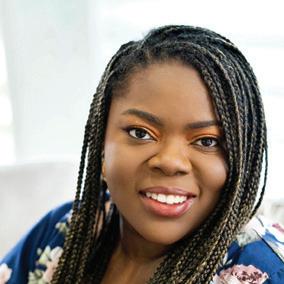










There are great plans ahead for Summer 2023 as Toronto looks forward to the 46th Toronto Caribbean Festival. The Festival Management Committee (FMC) which officially runs the festival relocated to a new location at 716 Gordon Baker Road, # 201.


The FMC, a not-for-profit organization has been managing the festival since the early 1990s works in conjunction with vital stakeholders: Carnival Arts Canada (CAC) which represents the Mas bands, the Organization of Calypso Performing Artists (OCPA) which represents the Calypsonians and the Ontario Steel pan Association (OSA), which represent the pannist.
Jennifer Michelle Hirlehey is the new Chair of the FMC, and Mischka Crichton has been promoted to Chief Executive Officer (CEO), having served as the Festival Manager in previous years. In addition, Adrian Charles, who has been active for many years as the parade organizer is the new General Manager.
In a communication from FMC on Friday, May 26th, in the Toronto Carnival Insider newsletter Volume 4 titled “Beyond the Mas” emphasizes the essential role that OCPA contributes to the festival. It highlights the partnership between two essential stakeholders. It states, “Together, OCPA and the FMC have been charting a new collaborative course. The FMC sees one of its main roles as promoting and supporting the calypsonians and keeping calypso and soca alive in Canada. Our organization not only provides financial support to OCPA, but also believes in promoting and showing public support for their events.”


The new management structure has stakeholders on its team with the addition of Louis Saldenah, president of Caribbean Arts Canada, and one the most successful Mas band in the history of North America’s largest festival. By making stakeholders directors of the FMC, it is hoped that it will put pressure on the provincial, municipal and federal governments to release more funding.
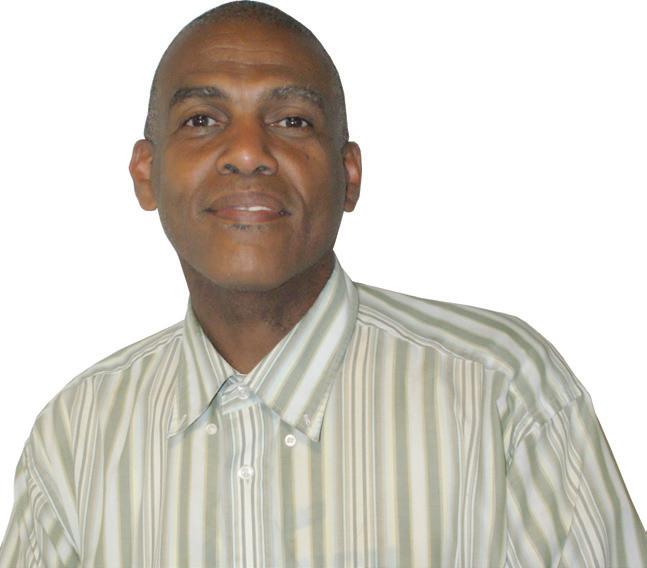

On Thursday, May 31st, the official launch of the 56th Toronto Caribbean Festi-
val was held at the Ontario Science Centre. It was hosted by CTV News Anchor and reporter Nathan Downer and Jessica Smith. On hand were masqueraders from many of the leading Mas camps who will be showcasing their costumes at the Grand Parade. Many of the Mas bands featured brightly coloured costumes with rich textures. Costumes were displayed from the bands: Sugarcane, Lux Carnival, Freedom Mas Band, Fantasia, Sublime Mas, Epic Carnival and Costume Creators Cultural Art. The Ontario Steel Pan Association Steel Orchestra played new songs and Henry Gomez aka King Cosmos sang his mesmerizing song, “Pull Together.”
Mischka states, “We are so pleased to announce our partnerships with: Toronto FC, Metrolinx, Disney, Grace Foods, Toronto Blue Jays, Bell Media and Porter Airlines.”
The theme for this year is: Diversity and Culture Lives Here! It is a testament to the open arms of organizers who invite everyone to play mas, watch the events, or support this showcase of pageantry and freedom.
Hirlehey, Chair of FMC states, “We are going into elementary and high schools and educating young people about the history, artistry and craftsmanship of costumemaking.”
Some of the upcoming events and dates are listed below:


• Tuesday, July 11th: Official Launch
• Friday, July 14th and Sunday, July 16th: The Calypso Tent Series
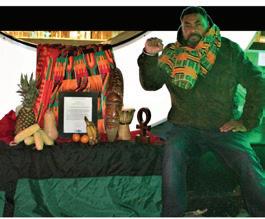

• Sunday, July 16th: Junior King & Queen Showcase at Scarborough Town Centre
• Saturday, July 22nd: Junior Carnival Parade at Malvern Town Centre
• Sunday, July 30th: OCPA Calypso Competition
• Calypso 365 featuring Calypso Stars at the Harbourfront Centre

• Thursday, August 3rd: King & Queen Showcase
• Friday, August 4th: PAN ALIVE Panorama

• Saturday, August 5th: The Grande Parade
• Sunday, August 6th: Pan in de Park and TCC International Food Festival at Neilson Park



Anyone interested in knowing about events for this year’s festival can check the following social media platforms:
Website: www.torontocarnival.ca

Instagram: toronto carnival.ca





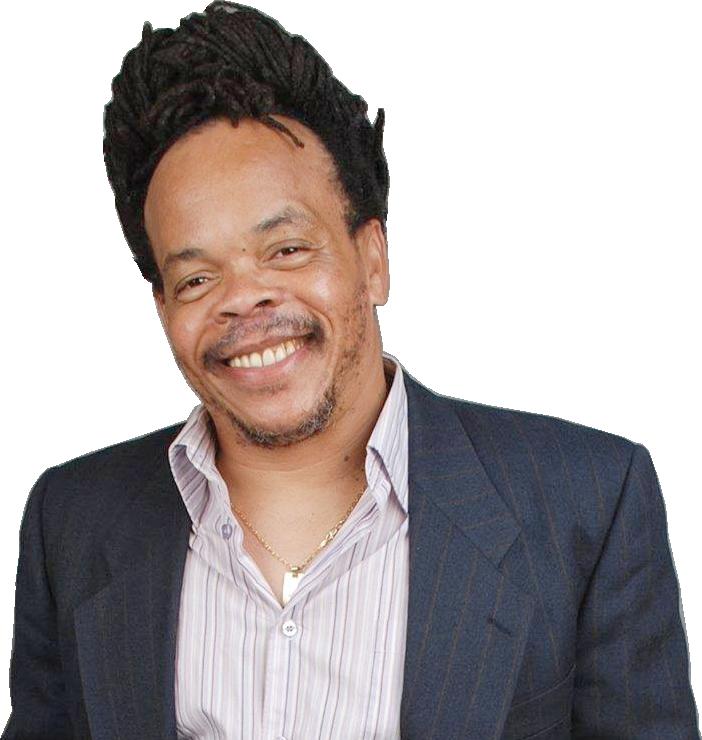 TC REPORTER
TC REPORTER
The EU (aka The European Union) is rejecting Russia’s request that it provide millions of starving Africans with grain from Ukraine.
97% of this grain that is much needed in Africa goes to the EU, and since the EU has no use for this excess grain, they are using it to feed pigs there.
Imagine that Polish and Hungarian farmers are so disgusted with this misuse of food that is forced on them that they are now looking for ways to reject the excess imported grain.
The huge question is why? Why is Ukraine allowing this to happen and why
The release of a new report by Health Canada and Environment Canada on toxic “forever chemicals” being present in Canadians’ blood samples has raised community concerns.
A draft assessment of the science of these chemicals known as per-and polyfluoroalkyl substances (PFAS) shows high levels in the blood of Canadians. The report was released in early May of 2023 on the Government of Canada’s under the official title, “Draft of Per-and Polyfluoroalkyl Substances (PFAS) Report.”
The executive summary of the report indicates that they belong to a class of over 4,700 human-made substances, which are commonly used in consumer products, industrial applications as well as specialized applications. The report states, “The wide -
is the European Union a part of this deadly conspiracy towards Africa? Let us find out.
Ivan Nechayev (Russian Foreign Ministry Deputy Spokesperson) had this to say concerning the situation, “Unfortunately, not a single grain ship has reached the shores of starving countries in Africa or South Asia. They go mainly to western ports, and the range of cargoes consists mainly of corn, grain, and sunflower oil, rather than wheat, which cast doubt on the sincerity of statements voiced in the West that global food security depends on the grain deal.”
The Russian news agency (RT) has made a point of telling folks where the ships with the wheat are going. “Two of the ships are going to Turkey, one to England, another one to Ireland and others are headed towards Italy and China.”
It seems very hard to find anyone who wants to take responsibility for this ball game. Here is what the U.S. government had to say concerning the subject.
America Secretary of State Anthony Blinken had this to say about the wheat and Africa fiasco, “The Russian government
spread use of these substances and their extreme persistence in the environment, propensity for accumulation, and mobility has led to PFAS being commonly detected in the environment and humans.”
The report notes further that, “There is a growing body of evidence that exposure to other PFA’s can lead to adverse effects on the environment and human health. Cumulative effects from co-exposure to multiple PFAS may also occur.”
Largely due to the chemical stability of these PFA’s they have been nicknamed, “forever chemicals.” They are “extremely stable in the environment,” and “highly persistent.” The report accepts the Organization for Economic Co-operation and Development (OECD) chemical definition, which includes any chemical substances with at least a per fluorinated methyl group (-CF3), or s per fluorinated methylene group (-CF2). These chemicals can be found in a wide range of substances such as: surfactants, lubricants, repellents (for dirt, water, and grease) as well as firefighting foams, textiles, cosmetics and food packaging materials.
The report shows further that Canadians are exposed to PFAS from many diverse sources: food and food packaging, cosmetics, products available to consumers, ambient air, indoor air and dust, and drink-
continues spreading disinformation about its unjustified war’s disastrous consequences, including global food insecurity.” He went on to say, “The Russian government should stop weaponizing food and allow Ukraine to safely ship out its grain so that millions of hungry people in the Middle East and Africa can be fed.”
It has been reported that all the talk about getting Ukraine wheat out to Africa was just a pretext to send that same wheat out to Europe, and until recently anyone who said so was accused of peddling disinformation, however, as far back as July 2022, Polish farmers have complained that wheat from Ukraine was making its way to the markets there and suppressing the farmer’s prices. Here is an example of how this problem has had some unintended targets. Hungarian prices have fallen from 300EU to 217 Euros. This reminds me that the old folks were right after all, “Whoever digs a pit, shall fall in it.”
Those European nations who are feeling the squeeze the most now are being denied any assistance. So far, the EU has de -
nied Hungary and Slovakia’s request for aid. All this drama could have been easily avoided if the wheat was not weaponized but given to the needy people of Africa in the first place.
Russian President Vladimir Putin had this to say, “From August 1st, 2022, to March 20th, 2023, 827 ships left Ukraine of which only 3,000,000 tons of grain was sent to Africa and 1.3 million to the poorest countries in Africa. Almost 45% went to well-fed European countries even though this whole deal was presented under the pretext of ensuring the interest of African countries.”
I am not a politician, but if I had any advice for the African governments, I would say to them, try and concentrate on building up your agricultural resources, you have very fertile soil, so take advantage of that. Grow as much of your food as you can and share with your fellow Africans.
If you are wondering why the so-called aid is not coming your way, you should remember that the people behind the aid have motives, and I know that you understand me.
ing water. Even though, there is very little monitoring by human biomonitoring surveys, certain PFAS have been found in the blood (plasma or serum) of the general population in Canada, and Northern Indigenous communities (as measured in adults, including pregnant women) as well as Indigenous youth and children in other parts of Canada.
As a result of the draft report, the Canadian Environmental Protection Act (CEPA) proposed listing these human-made chemicals as toxic. Canadians have up to the middle of July to give feedback with respect to the proposed change to CEPA. The first step with regard to banning a substance is to ensure that it has been identified as toxic. There are three potential risk management options that CEFA are considering:
• Regulatory and non-regulatory controls for PFA’s or firefighting foams
• Gathering information to identify and prioritize options for minimizing exposure to PFA’s from other sources and products
• Aligning with actions in other jurisdictions, where appropriate
CEFA are particularly interested in feedback from: interested Canadians, Indigenous peoples, non-governmental organizations, fed-
eral, provincial and municipal governmental organizations as well as those who work in the following industries: refrigerants, textile, cosmetics, food packaging, fire-fighting and chemical synthesis and industry who use lubricants and repellents in their products (for dirt, water and grease).
Comments can be submitted either by:
1. Email: substance@ec.gc.ca
2. Mail: Program Development and Engagement Division, Science and Risk Assessment, Science and Technology Branch Environment and Climate Change Canada 351 Saint-Joseph Boulevard Gatineau QC KIA 0H3
3. Phone: Substances Management Information Line 1-800-567-1999 (within Canada) Or 819-938-3232(outside of Canada)
4. Online at the Environment and Climate Change Canada’s Single Window. It is necessary to create an account first, then click the Chemicals Management Plan link, and then select Initiative “Chemicals ManagementGeneral.” Within the form, enter the publication name in the Submission Title field.

Globalists
report
Government of Canada raises concerns about toxic chemicals in the blood of Canadians
A.I. has become such a part of our lives, that most of us ignore the fact that this technology has the potential to be extremely dangerous especially if it is left in the wrong hands, and trust me when I say, people are starting to ask questions:
• Should we let machines flood our information channels with propaganda and untruth?
• Should we automate away all the jobs, including the fulfilling ones?
• Should we develop nonhuman minds that might eventually outnumber, outsmart, obsolete and replace us?
• Should we risk loss of control of our civilization?
One final question that must not be ignored is, can we trust our governments with a tool as powerful as AI?
This answer will differ depending on what side of the technological fence you sit on, but we have to become a little concerned if AI creators are starting to question their own technology.
Artificial intelligence heavyweights are calling for a pause on advanced AI development.
Elon Musk, Steve Wozniak, Pinterest co-founder Evan Sharp, and Stability AI CEO Emad Mostaque have all added their signatures to an open letter issued by the Future of Life Institute, a non-profit that works to reduce existential risk from powerful technologies.
The letter warns that AI systems with human-competitive intelligence can pose profound risks to society and humanity, as shown by extensive research and acknowledged by top AI labs. As stated in the widelyendorsed Asilomar AI Principles, advanced AI could represent a profound change in the history of life on earth, and should be planned for and managed with commensurate care and resources.
Unfortunately, this level of planning and management is not happening, even though recent months have seen AI labs locked in an out-ofcontrol race to develop and deploy ever more powerful digital minds that no one – not even their creators – can understand, predict, or reliably control.
Really think about that; a system that cannot be controlled by its creator.
The most recent AI development is the GPT-4. It is Open AI’s large multimodal language model that gen-
erates text from textual and visual input. Open AI is the American AI research company behind Dall-E, ChatGPT, and GPT-4’s predecessor GPT-3.
GPT-4 stands for Generative Pre-Trained Transformer 4, and it is capable of handling more complex tasks than previous GPT models. The model exhibits human-level performance on many professional and academic benchmarks.
GPT’s are machine learning algorithms that respond to input with human-like text. They have the following characteristics:
• Generative. They generate new information.
• Pre-trained. They first go through an unsupervised pre-training period using a large corpus of data. Then they go through a supervised fine-tuning period to guide the model. Models can be fine-tuned to specific tasks.
• Transformers. They use a deep learning model - transformersthat learns context by tracking relationships in sequential (occurring in order) data. Specifically, GPT’s track words or tokens in a sentence and predicts the next word or token.
I have to admit; I have become a fan of ChatGPT. It has assisted me with a wide range of tasks: it answers factual queries, helps with problem-solving, offers creative suggestions, and provides explanations. It is quite easy to use, pose a question, and ChatGPT quickly generates responses, allowing for rapid exchanges in conversations. This has been advantageous when I require prompt answers or want to engage in a fast-paced conversation.

Like anything else, AI does have a dark side; most recently, an artificial intelligence bot was given five horrifying tasks to destroy humanity, which led to it attempting to recruit other AI agents, researching nuclear weapons, and sending out ominous tweets about humanity.
The bot, ChaosGPT, is an altered version of OpenAI’s Auto-GPT, the publicly available open-source application that can process human language and respond to tasks assigned by users.
In a YouTube video posted on April 5th, 2023 the bot was asked to complete five goals: destroy humanity, establish global dominance, cause chaos and destruction, control humanity through manipulation, and attain immortality.
Before setting the “goals,” the user enabled “continuous mode,” to which a warning appeared telling the user that the commands could “run forever or carry out actions you would not usually authorize” and should be used “at your own risk.”
Use at your own risk? Hmmm!
In a final message before running, ChaosGPT asked the user if they were sure they wanted to run the commands, to which they replied “y” for yes.
Once running, the bot was seen “thinking” before writing, “ChaosGPT Thoughts: I need to find the most destructive weapons available to humans so that I can plan how to use them to achieve my goals.”
The idea of AI becoming capable of destroying humanity is not new, and this is why the concern for how quickly it is advancing has been gaining considerable notice from highstatus individuals in the tech world.
In June 2020, more than 25 governments around the world, including those of the United States and across the European Union, adopted elaborate national strategies on artificial intelligence — how to spur research; how to target strategic sectors; how to make AI systems reliable and accountable.
Unfortunately, it was found that almost none of these declarations provide more than a polite nod to human rights, even though artificial intelligence has potentially big impacts on privacy, civil liberties, racial discrimination, and equal protection under the law.
“Many people are unaware that there are authoritarian-leaning governments, with China leading the way, that would love to see the international human rights framework go into the dustbin of history,” explained Eileen Donahoe (Executive Director of Stanford’s Global Digital Policy Incubator). “For all the good that AI can accomplish, it can also be a tool to undermine rights as basic as those of freedom of speech and assembly.”
There was a call for governments to make explicit commitments: first, to analyze human rights risks of AI across all agencies and the private sector, as well as at every level of development; second, to set up ways of reducing those risks; and third, to establish consequences and vehicles for remediation when rights are jeopardized.
Researchers found that very few governments made explicit commitments to do systematic human rights-based analysis of the potential risks, much less to reduce them or impose consequences when rights are violated. Norway, Germany, Denmark, and the Netherlands took pains to emphasize human rights in their strategies, but at that time, none of the governments had moved abstract commitments toward concrete and systematic plans.
What must be recognized is that AI systems are complex and can have unintended consequences. In the wrong hands (and when I say wrong hands, I mean the government) poorly designed or improperly tested AI algorithms could produce harmful outcomes, leading to accidents, system failures, or unintended side effects.
Some thoughts to consider:
• AI can be used for malicious purposes, such as cyberattacks, hacking, or creating sophisticated malware. In the wrong hands, AIpowered systems can exploit vulnerabilities, launch large-scale attacks, or infiltrate critical systems.
• AI can be integrated into autonomous weapons systems, enabling them to make decisions and operate independently. If misused or hacked, these weapons could cause significant harm, as they may have the ability to select and engage targets without human intervention.
• AI can generate highly realistic deep fake content, including manipulated videos, audio, or images that are difficult to distinguish from genuine ones. In the wrong hands, this technology can be used to spread disinformation, impersonate individuals, or incite social unrest.
• AI can facilitate mass surveillance and invasion of privacy. In the wrong hands, AI-powered surveillance systems could be used for unauthorized monitoring, tracking, or profiling of individuals, leading to violations of civil liberties and human rights.
• AI can be used to identify and exploit vulnerabilities in computer networks, software systems, or infrastructure. In the wrong hands, AI-powered attacks can have severe consequences, compromising sensitive information, disrupting critical services, or causing economic damage.
There is a range of international forums where cooperation on international AI governance is being discussed. This includes: the US-EU Trade and Technology Council (TTC), the Global Partnership in AI (GPAI), the Organization for Economic Co-operation and Development (OECD), as well as work we are doing in the Brookings/CEPS Forum on Cooperation in AI (FCAI).
The capacity of the U.S. to lead internationally on AI governance is hampered by the absence of a comprehensive approach to domestic AI regulation. The absence of a more comprehensive approach means that the U.S. is unable to present a model for how to move forward globally with AI governance, and instead is often left responding to other countries’ approaches to AI regulation, the EU AI Act being the case in point.
Such a valuable tool, but such a dangerous one. Current AI research and development should be refocused on making todays powerful, state-ofthe-art systems more accurate, safe, interpretable, transparent, robust, aligned, trustworthy, and loyal.
The pause on AI technology is just that, a pause. If our governments are not regulated, that pause will just be a blip in time.
Can we trust our governments with a tool as powerful as AI?














 TC REPORTER
TC REPORTER
Canadians are slowly waking up to the fact that they have been “Taken for a ride” by their government and this could not come a moment too soon.
“I have a digital dollar. I have my: bankcard, visa, visa debit, PayPal, Apple wallet, Apple iPhone, and Apple watch. I also carry cash in my wallet. Big fat no for me.”
Source Ann Rolle via Twitter
“Definitely not. Voting against a #DigitalCanadianDollar. I am not ok with surveillance and having my money cancelled at the whim of the government, also not sure what the benefits are, it still loses purchasing power.”
Source Ayelen Osorio –Twitter
This was just a tiny part of the angry responses that the Bank of Canada got to its survey on how Canadians view CBDCs recently.
Senior Deputy Governor of the Bank of Canada Carolyn Rogers pretended to care about public opinion while
trying to force CBDCs on the citizens of Canada.
Here are the cunning words of this deputy female banker.

“Here at the Bank of Canada, we are exploring the possibility of issuing a digital version of cash. Not to replace cash, but to ensure Canadians always have access to a safe, stable, and official payment option in an increasingly digital world.”
Rogers said that the public might be thinking, “Who needs a digital dollar” and they may be right. In the same breath, you can hear that this is already a foregone conclusion from the politician and bankers’ point of view.

“The bank has to be ready if and when parliament makes that decision,” Rogers said. Now let’s think about this sentence for a moment.
This banker was so confident that she and her bosses have Canadians in the bag, she is even asking for their input to design the digital dollar.
“Your input,” she said, “will help us make sure that it is convenient, easy to use, and meets your needs.” All one has to do is take a look at what is left of China and look no further.



As I listened to Carolyn Rogers make her case for CBDC’s I could not hide the smile.
However, one word and two sentences stood out for me, and they are convenient, easy to use, and meet all your needs, and this is what I think she
should have said.
• CBDCs will be “convenient” for tyrannical governments to control and starve their citizens

• “Easy to use” against the citizens, just ask the truckers who were locked out of their bank accounts




• “Meet all your needs” this might happen if you keep quiet about the climate change hoax and endless socalled vaccines

Canadians, is this the type of currency you want to help design and leave your children?
Apparently, Rogers is of the opinion that the rest of the country either cannot or does not read, and maybe that’s why she feels entitled to mislead Canadians financially.
Here is my point. Her bank white papers say, and I quote, “As per the BoC 2020 paper, the primary motivation for issuing a CBDC would be a sufficiently cashless economy, which would make the use of Canadian dollar in its physical form limited and the possibility of the Canadian dollar facing competition from an alternative digital currency.”
Yet the second line of her opening statement says, “Not to replace cash.” Can someone tell me exactly who this woman is trying to fool?
I was not just satisfied to quote Twitter replies for this article, so I went to the streets of Toronto to engage a few
people. I got an earful, but only one man wanted to be quoted on record. In case you are wondering what the rest said, I can tell you that none of it was positive concerning CBDCs.
Carter (39) had this to say, “I feel like in some ways it’s inevitable based on the direction that the world wants to go in. Personally, I think it’s dangerous, and that less fortunate people will be the ones to struggle with it.”
Carter went on to say, “Now you’re talking about access, how are you going to make sure that everybody has access to this new system? Being a Black person myself I already see equity disparity happening, and I see it being a problem.”

I asked Mr. Carter what he thought of who is going to be controlling this currency, and he answered, “Yeah that is part of the danger because if this is completely digital, and for whatever reason the government decides to say no one is allowed to do this or that, then how are we going to spend and function.”

He concluded by saying, “That is way too much control to give to one organization, or one body that has proven like governments the world over, that they are not trustworthy when they have too much control. This sounds too authoritarian to me.”
Canadians say no to CBDCs. What happens next will tell us exactly whom this government works for.

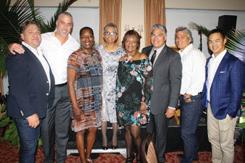





of elders from diverse sectors, such as: government education business, community organizations and religious organizations. It is hoped that CCBET will play a vital role through archiving and documenting the stories of Black elders. It will document and share the: personal stories, triumphs, challenges, and significant contributions of these remarkable elders.
thankful to you.”
Tuesday, May 23rd, 2023, was a historic day in the African-Canadian community as it marked the launch of a positive development. It was an initiative of Build Black Canada, which is committed to the progress of Black Canada. The mission of Build Black Canada is to: promote, empower, inspire, and support initiatives focused on advancing Black Canadians. The launch of the Canadian Council of Black Elder Trailblazers (CCBET) was an inaugural event to show support for Victoria University, located in the heart of the University of Toronto.
The press release states that, “The formation of the council aims to tap into the wisdom and experiences
Their narratives will be shared through various mediums including: print, podcasts, radio and TV interviews, documentaries, films, and speaking engagements. It is crucial to recognize and amplify the contributions of our esteemed elders, and history makers who are often overlooked in the past.”




Dr Rhonda McEwen (President & Vice-Chancellor of Victoria University gave the opening address. “Trailblazers are about: access, creating access, and points of entry for many, many people. I stand here today because of points of entry, little things, along the way, that you didn’t dream would lead to my standing here. I know that you have played a part in my standing here; I am extremely grateful and I am really
It was largely due to the tireless work and passion of Gwyneth Chapman that the launch was made possible. Gwyneth has been active over the years and has served as: Special Advisor, as well as Youth Engagement & Development to John Tory. She currently serves as Senior Advisor in Brampton’s Social, Cultural and Economic Empowerment and Anti-Black Racism Unit. “This launch is a vital step in creating a better future for all. By participating, you will have the opportunity to connect with, and learn from these trailblazers, as well as benefit from their wisdom and advice. This group will act as a bridge to our past and present Black Canadian leaders.”
In attendance were many community stalwarts and outstanding African-Canadians who as members of the panellists shared their stories and answered.
Zanana Akande, the first Black woman to serve in Bob Rae’s NDP government, emphasized the importance of overcoming new hurdles that are placed in one’s way by creatively coming up with new solutions. ”We’ve walked

around these barriers before. We’ve climbed over them; and now we’re just going to knock them down and stand on top of them.”
Other elders who participated include: Dr. Winston Larose (Mr.Jane and Finch), Beverly Salmon (First Black Metro Councillor), Ken Jeffers, Spider Jones, Valerie Steele and Marjorie Taylor, Sam and Rita Burke, Dr. Jean Augustine, Francis Jeffers and Kingsley Gilliam.
The wisdom in their words and wealth of insights and information presented reveal that there is much that the younger generation can learn from them. Kingsley Gillian shared the importance of creating our own Baobab tree as a means of sharing the knowledge of the elders. This tree plays a significant role in African literature and traditional folk tales. It is believed that kings and elders would hold meetings under the Baobab tree and it is commonly used as a venue for community meetings, or even a classroom in contemporary settings.
ment and consumption to more sustainable options. After looking through the documents it got me thinking, and the question that came to mind was “Why does this matter?” Well, let’s talk about it.
we are sourcing our fish at supermarkets, we check for whether the fish is wild, or farmed. Now we are being informed that we cannot trust those labels.
don’t include all the seafood they sell under their sustainability commitments.
It is grocery shopping time, so you grab your list, jump in the car, and head to your favorite grocery store. For you, the priority is freshness; as you are putting items in your cart, you inspect the quality, appearance, and expiration dates of items to ensure you are getting the freshest options available. Naturally you are looking for high-quality products that meet your standards. This involves examining labels, checking for organic or locally sourced options, and looking for reputable brands you trust.
What if I told you that your local grocery store may be hiding details about certain products, and not being completely transparent about what they are selling you? Would you be surprised?
When it comes to the health and safety of Canadians, it is not something that I take lightly, which is why once again, I am going to have to call out certain grocers for being inauthentic, and actually lying about products that they are selling to the community.
Last week, I received an urgent email from members of the traditional unceded territories of the xwmeθkweyem (MUSQUEAM), Skwxwú7mesh (SQUAMISH) and selilwetal (TSLEIL-WAUTUTH) First Nations AND Halifax/Kjipuktuk, unceded Mi’kmaq territory. In the email, I was informed that most grocers avoid labelling products as “farmed.” While all grocers label “wild” on some seafood, nearly all avoid labelling “farmed” seafood, including salmon. What makes this sketchy is that without proper labelling, shoppers are unable to make informed choices.
I was able to do some research on an organization called SeaChoice, a science-based, solutions-focused influencer, advocate and watchdog with the primary goal of shifting seafood procure -
Salmon holds immense cultural significance for indigenous communities and many others around the world. Native American tribes, for example, have a deep spiritual and cultural connection with salmon, considering them a sacred species. Salmon are often central to traditional ceremonies, subsistence practices, and cultural heritage. Preserving wild salmon populations helps maintain cultural traditions and the heritage of indigenous peoples.
Wild salmon populations possess genetic diversity that is essential for their survival and adaptation to changing environmental conditions. Genetic variation allows them to withstand challenges such as disease outbreaks, climate change, and habitat alterations. Protecting wild salmon ensures the preservation of their genetic diversity, which is critical for their long-term survival and resilience.
Besides their cultural significance and importance to our biodiversity, let’s be real; for most of us salmon is yummy! Wild salmon are a valuable source of nutritious food for human consumption. They are rich in omega-3 fatty acids, high-quality protein, and essential nutrients. For many coastal and Indigenous communities, salmon is a traditional and reliable food source. Protecting wild salmon populations helps ensure a sustainable supply of this important food resource.
Farming fish has become a growing trend over the years, but the establishment of fish farms have led to the destruction of natural habitats. High-density fish farming has the potential to facilitate the spread of diseases and parasites to wild fish populations if not properly managed. Some fish farms rely on antibiotics to prevent or treat diseases that can spread rapidly in densely populated fish farms. Overuse of antibiotics in aquaculture can contribute to the development of antibiotic-resistant bacteria, potentially impacting human health. It is one of the reasons why when
Supermarkets have a commitment to prioritize and take actions that promote sustainability. Sustainability commitments are typically focused on addressing environmental, social, and economic issues in order to demonstrate their dedication to creating a more sustainable future. These commitments can help drive positive change, encourage innovation, and hold entities accountable for their sustainability efforts.
Open-net pen farmed salmon remains the Achilles heel for Canadian grocers’ sustainable seafood commitments. Nearly all received failing scores for their lack of progress to remove farmed salmon from their stores or take actions to improve their sourcing, according to SeaChoice’s latest Seafood Progress Report.
The 2023 Seafood Progress audit found:
• Farmed salmon scores were low for all but two grocers.
• Most grocers and the brands they sell continue to rely on farmed salmon certifications that are not fit for purpose. These certifications, including the Aquaculture Stewardship Council and Best Aquaculture Practices, fail to adequately protect wild salmon from disease or sea lice impacts from certified farms.
• Two grocers stood out above the rest. Sobeys was the only grocer to improve its score (from 34% to 68%) — largely due to preferentially sourcing and promoting closedcontainment farmed salmon. BuyLow Foods continues to be the only grocer to refrain from selling farmed salmon.
• All grocers have committed not to sell genetically engineered salmon. This marketplace consensus is welcomed given genetically engineered salmon’s potential risk to wild salmon.
In addition, more than half of grocers still
“That means a significant amount of seafood — from canned salmon and tuna to frozen seafood — is being ignored,” SeaChoice supply chain analyst Dana Cleaveley said. “For healthy oceans, we need grocers to be addressing all seafood sold in their stores, not just some.”
“Grocers and shoppers are being hoodwinked by open-net pen salmon certifications claiming, ‘best practice’ or ‘responsibly farmed.’ These certifications allow practices to continue that are largely industry norms, threatening wild salmon populations,” SeaChoice representative from Ecology Action Centre Christina Callegari said.

Next month, federal Fisheries Minister Joyce Murray is expected to announce the details for the British Columbia open-net pen transition plan.
These findings have prompted SeaChoice to call on the federal government to take steps to do what certifications in the marketplace have failed to do: protect wild salmon.
For shoppers out there, here are a few places that you need to be aware of, so when shopping, keep them in mind:


• Sobeys received the highest score at 68%, due in part to their being the only grocer to preferentially source and promote closed containment farmed salmon products.
• Costco, Co-op, Loblaw, METRO, Save-On and Walmart continue to sell salmon raised in open-net pen farms and rely on farmed salmon certifications that are not fit for purpose. These certifications, including the Aquaculture Stewardship Council and Best Aquaculture Practices, fail to adequately protect wild salmon from disease or sea lice impacts from certified farms.
• While all grocers label “wild” on some seafood, nearly all avoid labelling “farmed” seafood, including salmon. METRO and Costco are the only grocers to label farmed salmon as such.
simone@carib101.com







TC REPORTER

I walked into the room, and I was greeted by a sea of smiles. It was great to see some familiar faces (Alain Arthur, Caribbean Vibrations), and (Sharon, Kiwanis Club of Toronto Caribbean), and right away I knew that I was in good company.


The Toronto Caribbean Newspaper had been invited to a Caribbean Diaspora Changemaker Reception hosted by Food For The Poor Canada, and although it was a trek, I had done some research on the organization and learned some incredible things about them.


Food For The Poor Canada works in international relief and sustainable development, empowering communities in Latin America and the Caribbean through five areas of investment: food, housing, health, education, and livelihood. They respond to urgent needs while building community and social infrastructure and
utilizes pre-existing networks of local affiliated organizations to better sustain and grow the communities they serve. They ship and distribute food, medicines, and educational supplies, build villages, homes and schools, provide scholarships, and support income-generating projects.
Since 2008, FFPC has:
• Built 189 homes




• Built 38 schools
• Shipped and distributed over 25,000,000 meals


• Shipped and distributed $44,000,000 in food, medical, educational, and emergency supplies




They currently work in five islands: Jamaica, Haiti, Guyana, Honduras, Bahamas, and through their long-standing network of trusted partners, FFPC focuses on emergency preparedness. They work with government ministries and charitable partners, as well as churches and community leaders.
It is pretty impressive work; Food For The Poor Canada is addressing global challenges, promoting social progress, and creating a more equitable and re -




silient world. These two interconnected concepts play a vital role in addressing poverty, inequality, environmental degradation, and other pressing issues that affect communities worldwide.
I had walked in right in the middle of introductions; individuals were sharing their background and areas of interest. I appreciated that the moderators gave guests the opportunity to share updates on their individual efforts, and recent community developments.
I saw right away that this meeting was going to identify opportunities for collaboration, or partnership with other organizations, community groups, or stakeholders who share similar goals.
In the room were individuals with diverse backgrounds, experiences, and expertise, all from the African Caribbean Community: JCA, BBPA, yes, the community giants were out. It was such a great way to discuss how collective efforts can amplify impact and strengthen community support, without all the formalness.
The group participated in a thoughtful discussion about how we could assist FFTP expand a culture of philanthropy and make a bigger difference in the communities they care about.
One of FFTP Board Members,






Arlene Amitirigala, shared with me what was to follow such an impactful gathering.

“Our next step is to move forward with implementing a community of practice (CoP). A CoP is a group of individuals who share a common concern, interest, or set of problems and come together to learn, collaborate, and improve their practices. We believe that by fostering this community, we can create a supportive and empowering space for our respective associations to learn from one another and tap into vital resources.
This event served as a pilot. The plan would be to host quarterly gatherings to further expand our circle, continue the valuable discussions and spark collaborations.”
The power of community collaboration is a remarkable force that can drive positive change, solve complex problems, and create a sense of belonging and empowerment among individuals. Food For The Poor Canada continues to demonstrate that when people come together, pool their knowledge, resources, and skills, they can achieve outcomes that surpass what any individual could accomplish alone.
For many Torontonians having access to High Park is considered one of the greatest privileges of living in Toronto. Within the last few weeks, there has been discussion regarding the fate of High Park with respect to the possibility of banning cars there.
Currently High Park is closed to visitor vehicles on Saturdays, Sundays and public holidays, but “remains open to vehicles on weekdays. The group Car Free High Park Coalition is proposing to make the city’s largest and most iconic natural area, High Park, a car-free space.
Diane Buckell to Toronto City Council titled, “Keep High Park Open to Vehicles,” on Change.org, launched a petition. As of Wednesday, May 24th, there have been
4,068 signatures out of a possible 5,000.” Respondents are asked to email the petition to Councillor Perks at councillorperks@toronto.ca, 311 at 311@toronto. ca and the Deputy Mayor at councillor_ mckelvie@toronto.ca.





The petition notes, “High Park was deeded by the Howards to the City in 1873,” and, “It must be for the free use, benefit and enjoyment of all citizens.” The petition states, “With the park closed to cars, and very limited parking on local side streets, families may have to park up to 2-3 km from the park itself and walk the pavements to reach the park, and once in the park must be able to walk 4-5 km to enjoy the venues.”
Barbara Barranca is particularly concerned that the potential banning of cars in High Park could be an override of legal rights for all Toronto residents. In an email communication on Monday, May 15th, she outlines her specific concerns. As a resident of Toronto for almost 60 years she states, “Prohibiting or limiting an impressive sector of the population from having access by car is overriding the rights and generosity of Torontonians. It is overriding the generous and legal intentions of John George Howard.”
She is concerned about the legality of the arguments. She posed questions such as:
• What are the statistics of vehicle traffic in the Park for every year and for every time in the day?

• What are the “weekend only” statistics for people traffic (no cars) in the Park every day of every year? Do the statistics justify having the Park permanently closed to all cars for absolutely every weekend on every day of the year?
• Are there statistics with dates for when the Park is expected to be crowded (based on recent years). What are they, what are the dates, and for how long?
• Are there statistics regarding car pollution for the park for every day of every year and every time of the day? Is the argument being presented? What are the statistics that make the argument/complaint valid?
There are other vital questions stated with respect to possibly banning cars such as:
• Have you considered that a Park empty of vehicles is also a dangerous Park?
• Have you considered the many thousands of people who will no longer have access and what it does to the beautiful concept of openness and acceptance for everyone in the city of Toronto?

• Have you considered how it will limit the feeling of attraction and access for thousands of tourists to the Park and to the city of Toronto?
• Have you considered the many additional services that need to be made in order to accommodate persons who will now have to travel significant distances by foot to find needed washroom facilities?
• Regarding road safety, is it really so easy and convenient to turn a blind eye to the high speeds of bike racers on the Park roads?
High Park belongs to the People of Toronto. Banning cars needs to be their choice!
The power of community collaboration is a remarkable force that can drive positive change; food for
City of Toronto plans to decide fate of cars in High Park: will they be banned?
They consistently present only their perspective, or viewpoint while ignoring or dismissing opposing opinions.
The use of emotional appeals, provocative language, or personal attacks to sway opinions and avoid rational discussion fully knowing that this tactic can distract from the actual topic at hand and manipulate people’s emotions.
When you take a moment to look at the messaging coming from our government over the last few years, it suspiciously looks like there is somewhat of an agenda being pushed.
It’s important to note that having an agenda or advocating for a cause doesn’t necessarily imply malicious intent, but more and more the community has begun to speak out against a movement that they are not particularly comfortable with
Another individual who has been speaking out is Maxime Bernier.
He has spoken out against Bill C-4, which was unanimously adopted by all parties in the House of Commons in 2021, which criminalizes parents and therapists who try to help minors with gender dysphoria accept who they are. In effect, the law bans “conversion therapy” in one direction but allows it in the other. It is illegal to treat children for a
mental disorder, but it is legal to encourage them to undergo “gender affirming therapy” and mutilate their bodies. There has been this shift in narrative that encourages young people to make major changes to their bodies. Taking puberty blockers at a young age will transform their body and sterilize them for life, when they are too young to evaluate the impact of such a momentous decision. Sex change surgeries cause many complications and require lifelong treatments. More and more trans people who underwent such surgeries regret it later in life and want to “detransition”, but it’s tragically too late.
Bernier speaks to the fact that women’s rights and security are being trampled to accommodate men pretending to be the other sex. As a result, women are encountering men in changing rooms and bathrooms. Violent male criminals are being incarcerated in women’s prisons. The transfer to women’s prisons of male inmates who self-identify as women has been standard practice in Canada since it was introduced by the Trudeau government in 2018. It has resulted in male criminals with histories of sexual abuse being housed alongside female inmates, with several cases of violent behavior being reported in the media.
There is a particularly horrific case in British Columbia involving a man, Adam Laboucan, who raped a threemonth-old boy when he was 15 years old. He drowned a 3-year-old boy. He became Canada’s youngest violent sex offender when he was sentenced to prison at 17 years old. After he started identifying as a woman and changed his name
to Tara Desousa, he was transferred to the Fraser Valley Institution for Women in Abbotsford. This is a minimum-security prison with a Mother-Child Program.
It’s unbelievable that this can happen in our society today. Instead of protecting our most vulnerable, Justin Trudeau’s government puts women and children at risk, while accommodating violent rapists who seemingly pretend to be the other sex.
I just learned this, and when I heard it I had to shake my head. Gender ideology is even transforming our language. Bill C-16, adopted by the Liberal government in 2016 and famously opposed by Jordan Peterson, recognized gender self-identification and opened the door to compelled speech. Since then, businesses and government agencies have banned the use of words like “woman” and “mother” in favor of “menstruating people,” and “birthing people.”
Bernier had this to say, “The normalization of radical gender ideology will have a catastrophic impact on women and children if we do not reverse course soon. The People’s Party is the only party taking this issue seriously. None of the establishment parties, including the fake Conservatives, have anything to say about it. On the contrary, they support these disastrous policies and trends.”
It is completely unacceptable that not a single elected MP is brave enough to stand up for women and children, and basic biological realities! I have been speaking out against this madness for many years already, and I will continue to speak out against it in Parliament once I am elected MP for Portage-Lisgar.”
Bernier states that a PPC gov-
ernment will modify the Criminal Code to outlaw the use of puberty blockers, cross-sex hormones, and any form of bodily mutilation on minors with the goal of “transitioning” to another sex. He also includes that any person encouraging minors to “transition” will be held criminally responsible for attempting to cause harm.
He states that a PPC government will remove the ban imposed by Bill C-4, the so-called “conversion therapy bill”, that is preventing parents and counsellors from helping minors who suffer from gender dysphoria accept their body.
They will strictly enforce section 163.1(1)(b) of the Criminal Code in order to remove inappropriate pornographic content from schools and libraries, and will protect women’s spaces – bathrooms, changing rooms, shelters, and prisons –from intrusion by biological men.
They promise to maintain separate competitions for women in which biological men cannot participate in sports regulated and funded by the federal government and will abolish federal programs that fund sex change operations for civil servants and prisoners.
Finally, a PPC government will repeal Bill C-16, the bill that added gender selfidentification as ground for protection against discrimination.
Wow! There is so much happening in our society right now that it is hard to keep up. What are your thoughts community? We need to hear you. This is your chance to voice your thoughts, even if it is anonymously. We don’t have to accept what is being fed to us. Time to start standing up for what you believe in.
ton is a journalist who has made a name for herself covering stories about the Caribbean communities in the city.


New York City is one of the most diverse cities in the world, and the Caribbean culture is an essential part of its vibrant and eclectic mosaic. This rich and colourful cultural tapestry is woven into everything from vibrant festivals, music, dance, and food to everyday expressions, language, and customs. It’s not hard to find an array of Caribbean cuisines, such as jerk chicken and curry goat, in the streets of Brooklyn, Queens, and the Bronx.
Amid this thriving cultural scene, some Caribbean journalists search the city streets, seeking to capture the pulse of the community. One such journalist is Milette (pronounced Mil-eet), a Guyanese reporter whose family moved to New York City over 20 years ago. Milling-
Millington’s passion for journalism began when she was ten and became immersed in books. She admired their ability to tell a story and decided she wanted to do the same. After completing her schooling, she took up a journalism degree to pursue her dream career. She often covers Caribbean festivals, such as the West Indian Day Parade, which takes place in Brooklyn every year. With her keen eye and inquisitive nature, the CUNY graduate captures the essence of the parade, its music, dance, and exuberant characters. Her articles and reports provide an on-the-ground view of the Caribbean culture in the city and are valuable resources for people who want to learn more about this vibrant community, but there is also a personal and emotional bent to her stories.
As a Caribbean journalist living with cerebral palsy in New York City, she has faced numerous challenges in her career. “I have had to navigate a city that is not always accessible to those with disabilities, and I have had to find cre -
ative ways to cover Caribbean food and lifestyle culture in the city while accommodating my physical limitations.” Her strong Caribbean spirit never let these challenges stop her from pursuing her passion for journalism and connecting with the Caribbean community in New York City. Today, she uses her platform as an education tool.
“First and foremost, it is important to recognize that each disability, or chronic illness affects each individual differently. For me, cerebral palsy affects me the most physically, making transportation a major challenge. However, I have found that with careful planning and support from my family, I am able to navigate the city and cover events related to Caribbean food and lifestyle culture.” Numerous Caribbean restaurants and food establishments in the city offer a taste of the region’s unique cuisine. One establishment is Caribbean Vibes Restaurant, located in Brooklyn. This restaurant offers a wide range of authentic Caribbean dishes, from juicy jerk chicken to hearty oxtail stew. Millington has also helped the city discover new voices, such as Zahira Marmar.
“One of the most inspiring stories I have covered in my career as a Caribbean journalist is that of Zahira Marmar, originally from the Caribbean island of St. Maarten. Zahira started her own tea company, which is a testament to the entrepreneurial spirit of the Caribbean community. Stories like this show that there is a wealth of talent and creativity within the Caribbean community in New York City, and it is always a pleasure to share these stories with a wider audience.”
According to Millington, covering Caribbean food and lifestyle culture in New York City as a journalist living with cerebral palsy has been a rewarding and challenging experience. “I have had the opportunity to connect with members of the Caribbean community, share their stories, and showcase the rich culture and traditions of the region. While there are obstacles to overcome, I believe anything is possible with passion, dedication, and a commitment to excellence.” That’s the true Caribbean spirit.
simone@carib101.com


It is summertime in the Northern Hemisphere, and for us northerner’s, we are happy that it is here.
The summer season brings a sense of relaxation and vacation vibes. Many people take time off work, and there’s an overall feeling of leisure and enjoyment in the air, making it an ideal time to unwind and explore new places.
It is no wonder that people enjoy traveling during the summer because the weather is generally warm and sunny in many parts of the world. It’s a great time to visit beaches, go hiking, or explore outdoor attractions. Summer is when many schools have extended breaks, making it an ideal time for families to plan vacations. It allows parents and children to travel together without worrying about missing school. People seek a break from their daily routines and the stress of work, or school, and islands provide an ideal escape. The serene atmosphere, soothing ocean sounds, and laid-back vibes contribute to a rejuvenating experience.
Today I want to present to our readers a hidden gem located within the lower crescent of the Caribbean archipelago between the islands of Montserrat and Dominica. Guadeloupe is a French territory, which
kissed islands, Guadeloupe is a varied place to holiday, with everything from deserted beaches to jungle-wreathed mountains. The country’s two main islands look like the wings of a butterfly and are joined together by just a couple of bridges and a mangrove swamp. If you’re looking for a Caribbean island that has it all, look no further than Guadeloupe. Here, beaches line the coast of all of its islands, there’s mountainous – and volcanic – terrain, which harbours stunning hiking trails, rolling green fields to marvel at and a rich and varied underwater world. The island is also famous for its lively music and dance festivals, which showcase the vibrant local culture. Guadeloupe is a must-visit destination for anyone looking for an unforgettable Caribbean experience.
So why should Guadeloupe leap to the top of your bucket list? Great question! Let’s take a little time to explore this dream destination.
Day trip to Les Saintes Island
Come and spend a day in Les Saintes, you will be able to enjoy beautiful beaches such as la Plage du Pain de Sucre or Plage de la Grande Anse. You can enjoy a splendid view of the bay, come and visit the fort Napoleon, or the old town of Terre-de-Haut.
Diving at the Cousteau Reserve
Whether you are an amateur or a professional scuba diver, the Cousteau reserve is a mustdo activity in Guadeloupe. Located in front of the beach of Malendure, it is one of the most important diving sites of the archipelago.
Relaxing at St Anne Beach
If you are looking for a white sand beach with crystal clear waters, you must go to SainteAnne beach! Located in Grande-Terre not far from the Toubana Hotel & Spa, this superb beach with its lagoon and coral reef is a
dream place to spend a relaxing day enjoying the beautiful sun of Guadeloupe.
Enjoy the view at La Pointe des Châteaux
This is the perfect place for a hike with a great view! There are several hiking options available for you to visit this natural site. You will be able to admire cliffs, wild beaches and a beautiful view over several islands such as La Desirade, Marie Galante and Petite Terre. It is also a perfect place to admire the sunrise.
Visit Chute du Carbet waterfalls
You will have the chance to admire this wonderful natural site after a hike in the heart of the tropical forest of lowland. Not far from the Soufrière volcano, the Carbet falls are composed of three waterfalls, which are the highest in Guadeloupe.
Mémorial ACTe un-Grand-Terre’s Pointeà-Pitre
Here you can learn about the history of the slave trade in Guadeloupe, and more about the island’s indigenous Arawaks population. The museum is a Unesco Slave Route Project, and it details how Guadeloupe ended up under French rule in the 1600s.
Try Creole and French cuisine in Guadeloupe
No visit to Guadeloupe is complete without sampling some of the archipelago’s specialties like: calalou, stuffed crab, fish cooked in lime juice and féroce d’avocat. There are over 200 restaurants spread across the islands, so you’re guaranteed to find a place to dine.
Guadeloupe is a treasure trove of hidden delights and undiscovered treats. From pristine beaches and crystal-clear waters to vibrant cultures and delectable cuisine, the region offers countless experiences waiting to be explored.
tre regions, spreading throughout the country.
“Just another way to get high, just another way to die.”
Note: Benzodiazepines can cause the user to not respond to naloxone during a drug overdose.
I can sound heartless, but I am not. I have seen many people in Canada and the USA ruin their lives, and many do die. Perhaps the lack of treatment centres and services is the problem, or that mental health has not been taken seriously for decades. I feel for these people, and most for their loved ones who just don’t know how to help them. Cultural and religious traditions often force some of these people to keep addiction within the shadows, hidden from prying eyes. Shame, and loss of face is often a concern for our neighbour’s, and the treatment of those addicted become a secondary issue.
to harm themselves what do you do? Stop them by taking control. You can listen to the addicted ones, and their family unit, and then do what is right, what is needed to save and preserve life!
You can either agree that drug addiction is an evolutionary pathway for the weak of society, or that life matters, and it needs to be preserved no matter what.
The public system can continue to skirt the problem, by feeding addicts with methadone, shoot up centres, free syringes and drugs all to calm their addiction safely, yet their addict continues, thrives and destroys lives.
No one has the right to kill him or herself while they are not of sound mind and conscience. No one. The present day drug protocols are nothing more than strung outtimed euthanasia.
proved for medical use in any country. It appears in samplings by the police, prompting recent warnings of its popularity with the illicit drug-using crowd. As you know, the police find these samples among the drugs present when someone overdoses, is dying, or ill from the use of illicit drugs. This drug is popular throughout rural, out of urban cen-
An addicted person is not of sound mind, often unable to make proper judgements and decisions for themselves and others. I came upon a situation in Cleveland, Ohio where all five members of a family unit were addicted, high and unresponsive to direct contact from caregivers. I had the police come, place them under arrest and take them to the local hospital for emergency detox and treatment, a long-term thing. Human Rights lawyers appeared and suddenly I was called a villain, instead of a life giver. Crazy world we are living in eh?
You want to solve the drug addiction game? Take control! If children are going
Give our healthcare and police officers the powers and obligation to clean up the roads, campsites of people with addictions. Place them in areas where clinical professionals can examine, treat, clothe and house these people, even over a long term so long as they rehabilitate.
A saved person, is a thankful person. Hear that politicians and decision makers? Empower social policy that can change lives. Forced addicts to become assets to society and their communities and families. Sometimes force works, if treatment is there, right behind within the process.
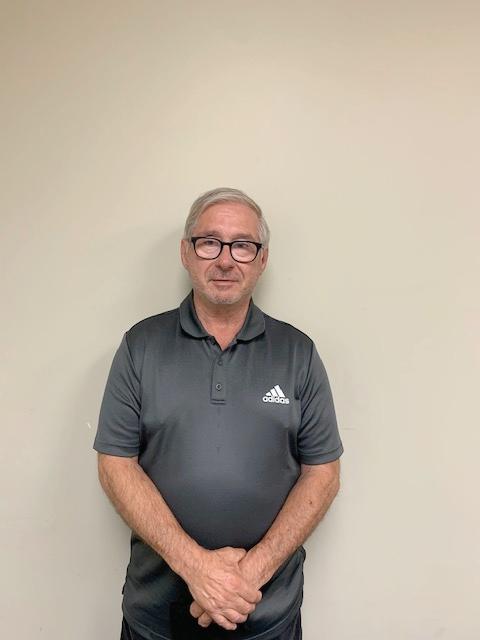
An archipelago of over a dozen sun-kissed islands Guadeloupe offers countless experiences
Just another high, another way to die; the rise of Bromazolam
 DIANA GIFFORD-JONES
TC HEALTH REPORTER
DIANA GIFFORD-JONES
TC HEALTH REPORTER

A humorous greeting card reads, “Technically I’m still young, but due to my back pain, I’m actually 90.” Whatever the age, including 99, back pain can be agonizing. It’s a surprisingly common problem.
A new study published by the Lancet Rheumatology Journal reports that 619 million people suffer from low back pain globally. That’s nearly 10% of the world’s population!
Why so many people? With higher numbers of people living longer, in part it’s mathematics. The older one gets, the greater the risk. By 99 years of age, the probability of living with back pain is high.
In addition to aging, what else
causes the trouble? It is no surprise that researchers found obesity high on the list. Their finding that smoking is another cause of back pain is more curious. It’s thought that damaged arteries in the spinal column and joints cause the pain. Smoking also contributes to osteoporosis, the bonethinning disease that can lead to a rounded spine and back pain.
According to the study, back pain occurs more in women than men. The reasons range from the effects of pregnancy and hormone changes to higher rates of osteoporosis. By the demographic numbers, with substantially older women than men in the world, there are more female sufferers.
What’s the economic effect? Back pain among the working age population means higher absenteeism from work, lower productivity among those at work, and early exits from employment, often with costly disability payments.
In the U.S., a 2016 study by the Institute for Health Metrics and Evaluation at the University of Washington’s School of Medicine assessed the costs associated
with 154 conditions. The Institute reported, “Low back and neck pain generated the highest expenditures at $134.5 billion. When combined with all other musculoskeletal disorders, such as joint and limb pain, osteoarthritis, and rheumatoid arthritis, the total exceeds $380 billion.” Think about that.
What about the other chronic conditions that get prominent headlines? According to the study, “Other health conditions with substantial spending in 2016 were: diabetes ($111.2 billion), ischemic heart disease ($89.3 billion), and falls ($87.4 billion).” What’s the key message? Back pain is a gargantuan financial problem for healthcare systems, public or private.
And watch out. With aging populations in most countries, fewer numbers of young people are being more heavily saddled to pay these costs.
It’s discouraging that after so much study, there are few signs of new treatments that relieve the pain or cure the problem. The long standard prescription for acute pain is bedrest, heat treatments, and painkillers. With time, the pain goes
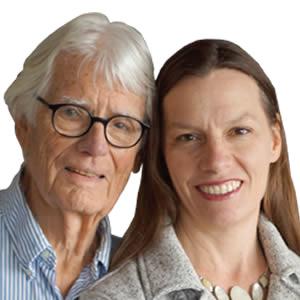
away, but for chronic pain, it’s not so easy. X-Rays or MRI can help pinpoint the source of pain. Some people try acupuncture and get relief. Others have success with chiropractors.
Another option is a fluoroscopy procedure on the facet joints of the spine. It does not require a general anaesthetic. A needle injection numbs the joint and during a fast 30-minute procedure a small instrument destroys targeted spinal nerves. It works for some, not for others.
When there’s no help to relieve the pain, what do you do? You search for your own ways to make life more comfortable.
People who know the challenges of living with chronic back pain don’t need an autopsy to find out why gravity is so brutal. What’s needed is a solution to the knowledge that this pain will be with them to their dying day.
A word to the young, from Socrates, the greatest thinker of ancient Greece, who said, “If you would seek health, look first to the spine.”
logue helps answer questions and lessen fears surrounding mental health. Dialogue also makes the public more aware that people with mental illnesses can live full lives. When people have the support they need, they can be fully involved in work, family life and their communities.
Restoration and Empowerment for Social Transition (REST) Centres is a non-profit that is Black-led, BIPOC-serving organization, whose mission is to end youth homelessness in Peel through the transitional housing and support services that they offer.
The month of May was designated Mental Health Awareness Month, and it takes place across Canada in May every year. During this month, Canadians can learn about mental illnesses and how they affect people’s lives in different ways. In addition, the public can learn more about how to reduce the stigma around mental illnesses. It is a chance for open and positive dialogue about how mental illness impacts people. This dia-
REST Centres recognizes that Black youth who are homeless are more at risk of experiencing mental illnesses. In an article in their May 2023 REST Insider update, they describe some of the challenges that they face. It notes,
“Black youth navigating housing insecurity often also navigate a myriad of other issues in the background, a leading one of which is their mental health. The mental health needs of the Black youth at REST Centres are vast, from: neglect in the family to peer issues at school, bullying, depression and generational trauma. One’s living environment echoes one’s mental state, and if one’s environment is toxic or abusive in childhood and early adolescence, those factors manifest into mental illnesses such as Post Traumatic Stress Disorder (PTDS), or Adverse Events Disorder, which are hard to overcome without stability and support.”
Dr. Chrystal Harvey, a registered nurse states that it is vital to ensure that the needs Black youth facing housing insecurity be addressed. She states, “If we can find safe environments for the youth, then inherently we can provide client care that is: safe, equitable, culturallysensitive, and they can have their road to recovery, which will have a positive outcome.”
She acknowledges that discussions about mental health in the Black community are problematic, often riddled with fears, stigma, ignorance and taboo. From the harsh treatment meted out to Black slaves with mental health challenges to present families protecting them FROM isolation and ostracization, these patterns are repeated regularly.
Charmaine Lane, a registered psychotherapist believes that it is important that a culturally-sensitive approach to mental health be the basis of how REST Centres ground its work. She facilitates training sessions with staff at REST Centres and brings attention to racial trauma at the core of these youths. She states, “Not all racialized youth are traumatized by racism, but a service provider should
always acknowledge the intersectionality between race and everything else in a youth’s life and understand the differences experienced by a youth who is unhoused, and Black versus a youth who is un-housed and White.” It is vital to affirm the racial identity of each client to help holistically.
Tash Thompson, a registered social worker describes, “Culturally-sensitive care as understanding the racial and social contexts present in the lens through which the youth experiences mental health.” Factors such as: bullying at school for their “nappy” hair, cultural dress, and dark skin, along with the racial and social contexts present in those comments and their impacts. It’s endlessly important for the youth in our care to see themselves reflected in their providers. Anyone interested in learning about REST Centres can check social media platforms: Facebook: restcentres.org
Website: restcentres.org
Instagram: @restcentres
Twitter: @Restcentre
so many people
Black youth who are homeless are more at risk of experiencing mental illnesses
simone@carib101.com TC
REPORTERThe power of art lies in its ability to connect, inspire, and transform. It has the power to shape our individual and collective experiences, challenge societal norms, and contribute to personal growth and cultural development. Art continues to be an essential and influential aspect of human existence. It continues to ignite imagination and inspire new ideas. Art will move you and evoke a wide range of emotions, from joy and awe to sadness and contemplation.
Art serves as a universal language that transcends barriers of culture, language, and time. It allows individuals to express their thoughts, ideas, and experiences in a way that can be understood and appreciated by others. It successfully communicates messages and narratives that may be difficult to convey through other means.
It was why I decided to trek all the way down to Cambridge to check out an exhibit titled, “To Build What We Become When We Dream.” I had received a message a few months ago from Katrina Coombs, an incredible textile artist from Jamaica, letting me know that her work was going to be displayed at this exhibit. Three months later, I finally made my way down, and it was well worth the drive.
Curated by Sarah-Tai Black, “To Build What We Become When We Dream” brings together Black women artists working across and amongst geocultural multitudes. Taking its name from activist and writer Nikki Giovanni’s poem “Word
Poem” (Perhaps Worth Considering), this exhibition acknowledges Black feminine artistic creation as a radical means for shaping worlds imagined otherwise. Their fiber-based works and techniques explore both abstract and figurative forms, offering a model of Black women’s aesthetic practices as diasporic devices of communion, repair, and intervention.
The artistic practices shared here refuse the expectation of self-abandonment and the conditions of the world as it is, centering instead an embodied dedication to oneself and one’s kin as realized through space, form, color, and tactility. A continuation of the freedom work of those who came before us, the artists offer a clarification of what abundance and care might look like in an otherwise inhospitable climate. Together, they are a prescient reminder that dreaming is a form of knowledge production and that the practice of liberation is inextricable from envisioning worlds with an unconditional capacity for love.
“To Build What We Become When We Dream” was a collaboration between McMaster Museum of Art and Cambridge Art Galleries as part of the McMaster Museum of Art’s BIPOC Mentorship program. The program was generously supported by funds from the Department of Canadian Heritage and the Office of the Provost, McMaster University.
The incredible artists included:
Nnenna Okore

Throughout her long career as an artistresearcher-teacher, she has focused on ecological issues steeped in artistic practice, pedagogy, and social engagements. In her most recent art projects, she uses bioplastics and environmentally friendly materials to create her artworks. Her works have been featured in major exhibitions at: the Museum of Art and Design, NY; Museum of Contemporary African Di-
asporic Art, New York; Spelman Museum of Fine Art, Atlanta; Museu Afro Brasil, São Paulo, Brazil; Memphis Brooks Museum of Art, and the Cleveland Museum of Art, among others. Okore’s recent exhibitions include the Bruges Triennial Exhibition, Belgium, and the Chengdu International Biennial in China.
Chason Adjoa Nana Yeboah-Brown

She is a self-taught: textile sculptor, doll maker and story-teller, exploring the oscillation of ancestral ritual through reconstructed, (un)woven and crocheted structures. Many of her works directly focus on themes of shame, loss of identity, sexuality, the notion and practice of “self-love”, hybridity, energy transference, and acknowledgement of the human form, with a primary focus on marginalized humans.
Katrina Coombs
She holds a MFA in Creative Practice from Transart Institute via the University of Plymouth. Her passion for fiber and an uncanny understanding of the sensitivity of threads and fabric are used to formulate designs and sculptural forms that relate to the human body, and especially that of the maternal figure, both physically and conceptually.
Ever the consistent creator, Coombs has been awarded grants from the National Performance Network (New Orleans) and the CATAPULT initiative (Jamaica), as well as fellowships with the Caribbean Cultural Center African Diaspora Institute (New York) and The Jamaica Art Society (New York). She has also participated in several residencies globally, such as: the Fountainhead Residency with Diaspora Vibe Cultural Incubator (Miami), the Gilbertsville Expressive Movement Artist Residency (New York), and the Davidoff Artist Residency (Bogota, Colombia). Her work has been featured in numerous exhibitions in: Kingston, Ma-
nila, Berlin, New York, Bogota, Miami, Sarasota, Kentucky, Chicago, Washington, Carolina, and Ontario.
I had a chance to catch up with Katrina who I found out was in Brazil at a two-month residency.
“Being out here has given me a chance to focus on creating pieces. Life can get busy, and I haven’t been able to give undivided attention to my work. Being out here is helpful because all I have is time for my work.”
“Amazing Katrina! Thank you for sharing “To Build What We Become When We Dream” with me. It was an extraordinary experience, but Katrina. How did your work end up here in Cambridge, Ontario?”
“The curator reached out to me. It was a random message saying that she saw my work circulating, and she made note of me. She reached out and I was like, let’s see how it goes.
I was surprised. It is good to know that my artwork has reached a global level. I heard the reception was great and the opening was incredible.
I have to step out of the traditional space of a Black artist. It has allowed me to infiltrate spaces that you would not find a Black artist. My work has begun to affirm me; the spaces in Jamaica are still very clique. It feels good to be able to express myself freely without judgment. I intended to stay rooted at home, but I am constantly stretching my wings. I love having the ability to share my artwork with the world.”
Exhibits like this show that art can serve as a catalyst for change and inspire people to question and challenge existing systems and ideologies. I am proud of Katrina, and the other artists for expanding their artistic reach, and showing the world all that Black Girl Power!
ister of Education and Associate Minister of Finance, responsible for the Ontario Retirement Pension Plan and Minister of Advanced Education and Skills Development. She served as Deputy Leader of the Liberal Party from 2022-2023.
have a plan to do exactly that.” Her plan shows how she will pay for every action to Fix the Six. The lists of the priorities are:
• Ensure enhanced litter, park bin and street litter bin collection
It was not a surprise when long-time MPP Mitzie Hunter decided to throw her hat into the mayoral election battle, which is underway to decide the next mayor of the largest city in Canada. There are currently about 102 candidates who have registered to run in the June 26th, byelection. This by-election will be the most expensive in the history of Toronto and is expected to cost over $30 million. In many ways it will serve to define Toronto for the next four years.
Hunter announced her resignation on May 10th, 2023, to run for mayor of Toronto. She has been an MPP for almost ten years. During that time, she served as Parliamentary Assistant to the Minister of Community and Social Services, Min -
“As a proud immigrant to this city, I have grown up, worked and lived in every corner of Toronto. I understand how important it is to make sure that voices across each part of the city are heard-not just the core: the status quo. My main goal is to make certain that Toronto is a city that works for everyone-that means there are many things, large and small and everything in between, that must be fixed.”
On Thursday, May 25th, 2023, Hunter released a 71-page comprehensive fully-funded detailed plan that features Six Priorities to Fix the Six. It has a balanced budget and a new and revolutionary progressive model for property tax increases ensuring moderate and lower-income homeowners pay a reduced level. She states, “Toronto is at a turning point that must not be a breaking point. People tell me they are worried that the city they love is on the brink of serious decline. I want to lead Toronto’s revival. I
• Affordable housing and renter protection
• Getting Toronto moving
• Safety, homelessness and mental health
• Improved city services
• A green, vibrant city
• Transparency in governance and budget
On Monday, May 29th, 2023, Hunter issued a five-point plan to enhance and improve neighbourhood parks. She presented a fully costed platform that includes a balanced budget plan. She states, “Parks are the heart of our city. For too long, they’ve been under-invested. My plan will improve and enhance our parks.” Highlights of the plan include the following:
• Add trees through the city’s neighbourhood shade tree program and reverse recent cuts to the tree maintenance budget
• Winterize park washrooms to keep them open year-round; Make sure water fountains are clean and operating
• Provide greater local control over our park programming
• Allow people to drink alcohol responsibly in parks across the city
On Thursday, May 31st, 2023 Mitzie announced a six-point game plan for working with the provincial and federal government in order to ensure that Toronto’s multi-billion-dollar budget gap is closed. The details can be seen on her social media platforms and include:
• Ending double transit fares
• Leading a coalition of mayors seeking one point of the HST
• Securing funding for refugee-related costs
• Building more transits
• Recouping health expenses
• Securing equitable federal support for new affordable housing
simone@carib101.com

Let’s be real; it is a challenging time for our young people. For a lot of our young people, the impact of the pandemic will have their residual effects, and this only adds to the unique challenges and pressures they face: academic stress, social media influence, and peer pressure are just a few that I can mention off the top of my head. It is why prioritizing mental health services and support systems are necessary in helping them navigate these issues and assist with their overall well-being and resilience.
On Tuesday, May 30th, 2023, the Toronto Caribbean Newspaper joined KBI Inspire for Mapping Futures’ an epic social evening that brought young people from diverse backgrounds together for a live podcast and social event that included: youth artists, poets, singers, and other creatives to reflect on managing anxiety about the future.
Young people from marginalized communities, including those from low-income backgrounds, ethnic minorities, and LGBTQ+ individuals, face additional barriers and discrimination. Events like this are unique because they focus on issues of social inclusion
and equality especially on the topic of mental health.
Taking a Strength-Based Approach to Mapping Your Future” with Hailey Hectman, was a special preevent workshop from 5:00 pm - 6:00 pm. In this workshop they dove into some key strategies and tools to help reframe a person’s perceived weaknesses into strengths, identify what their early dreams could tell them about their needs and aspirations as well as how they could translate their living expertise into transferable skills. This workshop presented attendees with an opportunity to reflect and reimagine who they are and what they are capable of!
Guests were then included in life curated art, as well as delicious vegan treats, giveaways and of course, music. It was then time for the first ever-live recording of the ‘Life Outside the Box’ podcast, co-hosted by Asante Haughton and Abbigail Kernya joined by panelists: Matthew Dawkins, Arissa Roy, Dancia Susilo and Tosan Tosanwumi.
Life Outside the Box is a youth mental health podcast that takes a deeper dive into the issues that affect youth – from a youth perspective. On this podcast, no topic is off limits, and they are back for a second season! It is a series of interviews with young people from all walks of life: from students and athletes to artists and activists. Asante, Abby and guests explore every topic with grace and remarkable insight.
The night was all about our
young people. I sat and listened to our younger generation engaging each other, elevating their voices, and fostering a sense of ownership and empowerment. I definitely was witness to how community initiatives like Mapping Futures helps shape a more inclusive and responsive society. By involving young people in finding solutions and addressing these issues, they have found a way to harness their energy, enthusiasm, and provide fresh perspectives.
After such a successful, and empowering night, I had to find out about the magic behind all of this, so I reached out to Gillian Smith-Clark, Editor in Chief, at KBI Inspire Magazine and she provided the low-low on Mapping Futures.
“I suggested an online magazine to an organization (Kaitlyn Bates) that I was working with. My background is writing and photography. I wanted to focus on youth; it was taking off and doing well, so I decided to take it on as a private project,” Gillian shares with me.
A little background for readers. Kaitlyn Bates is a seven-year-old girl who died from her injuries suffered in a car crash in Cobourg, Ontario on Monday, July 11th, 2011. Kaitlyn Bates was a passenger in a vehicle that collided with another vehicle on Dale Road in Hamilton Township about one kilometer west of Burnham Road. She was airlifted to Toronto’s Hospital for Sick Children where she died of her injuries.
“Her father started the organization around her,” Gillian continues.
“The initiative itself became dormant, so I started to run the magazine separately. KBI Inspire is a bi-monthly digital publication that aims to inform, empower and inspire young people.
The podcast (Life Outside the Box) started about two years ago. We applied for a grant the first year, and got turned down, so the second year, we were more specific. We brainstormed and came up with a podcast.
We intentionally keep the magazine cross-cultural. We wanted the stories and articles to be coming from the youth. We want their stories, not us as adults telling them what to do.”
Young people possess immense potential, creativity, and innovation, and what KBI Inspires has done is address their concerns and provide them with opportunities to unlock their talents and enable them to contribute positively to society.
This investment in youth empowerment helps build a strong foundation for the future. I am looking forward to the second season of Life Outside the Box, and if there is a young person who will benefit from KBI Inspires, send them over to https://www. kbiinspires.com/.
Every ticket purchased for this event is automatically entered into a draw to win door prizes, and we have some great stuff including signed copies of our panelists’ books, and merch from our sponsors and partners.
Some of the goals of AMCHASEE are:
• To create a perpetual governance model for the living people’s economic development
• Activate the infinite capacity in Law and Equity to build responsibly on the land. A sustainable ecosystem
of Likkle Jamaica and Karibbean people.” The event was a signature project of the City of Toronto Cultural Hotspot.
There have been discussions, conversations and dialogues regarding the changes that are being made in one of the most well known neighbourhoods in Jamaica.
Little Jamaica played an important role in the: economic, social, cultural, religious and intellectual lives of: Black, African and Caribbean communities in Canada. It still continues to draw individuals to the wide diverse Black businesses that are still there.
Amexem Mu Centre for Health, Arts, Social Enterprise & Education (AMCHASEE) is a not-for-profit organization founded by the grassroots descendants of the: Olmecs, Moors and enslaved Africans committed to serve and work for the implementation of a sustainable ecosystem for the advancement, and preservation of the same demographic inhabiting Toronto, Ontario, Canada.
• Educate and provide valuable solutions for the deplorable conditions of the people in the grassroots community
The overall mission of AMCHASEE is to transform the economic social wealth of Caribbean people.
On Thursday, May 11th, 2023, AMCHASEE issued a press release to promote the documentary screening of “Irie People,” discussion and Town Hall. It states, ”The Karibbean Alliance (responsible for the Kultural Equity’’ Little Jamaica”) and AMCHASE are formally inviting you to a Town Hall Meeting created by the grassroots creators of Roots Rock Reggae muzik genre and micro business operators whose sweat equity has inspired the Little Jamaica’s Cultural District Plan. The initiative calls to actions: Roots Rock Reggae musicians, cultural creators, Karibbean business operators
I interviewed Ed Orville (Kojo) on Friday, May 26th, 2023, regarding the upcoming event. He shared with me details about the historical roots of Little Jamaica and how it shaped his social realities and cultural development in Canada. He knows first-hand the many changes that have occurred in Little Jamaica and believes that it is important to document these powerful stories and share them across Canada.

On Saturday, May 27th, 2023
“Irie People” was shown at the Maria A. Shchuka Library located near the intersection of Eglinton Avenue and Dufferin Street. The documentary features micro-entrepreneurs commonly known as street vendors. Mr. Michael Francis (The Original Juicy/Juice Man) has been an integral part of the vibrant business community for close to 300 years adjacent to Randy’s Patty Palace. There were stories shared by individuals who have suffered greatly and economically who have been displaced by gentrification.
Mr. Enton Davidson (aka My Fine Juice) has been selling juice for a long time. He studied food and beverage at
college, and once owned a restaurant named “Treadies,” one of the best food restaurants on Eglinton Avenue. He mentioned that it would be better if he had a juice job. Mr. Kelly Noel is another street vendor. He has supplied belts for many people. He mentioned that he came up for farm work, but he ran off and he took care of seven children. Mr. Phillip White (aka Iron Man) was known for his business selling callaloo. Michael Francis was another micro entrepreneur featured in the documentary.
Samantha of Top Class Entertainment did an awesome job as MC of the event and expressed appreciation for the community members that were in the audience, such as Lazah Current. There was a discussion about the cultural significance of the Cultural District Plan especially with respect to Likkle Jamaica and future implications. There is a need for greater community engagement, public awareness and direct stakeholders involvement in all aspects of the cultural distinct plan, which is seeking greater feedback. Anyone interested in learning about the AMACHASEE can check www.amexemmu.ca
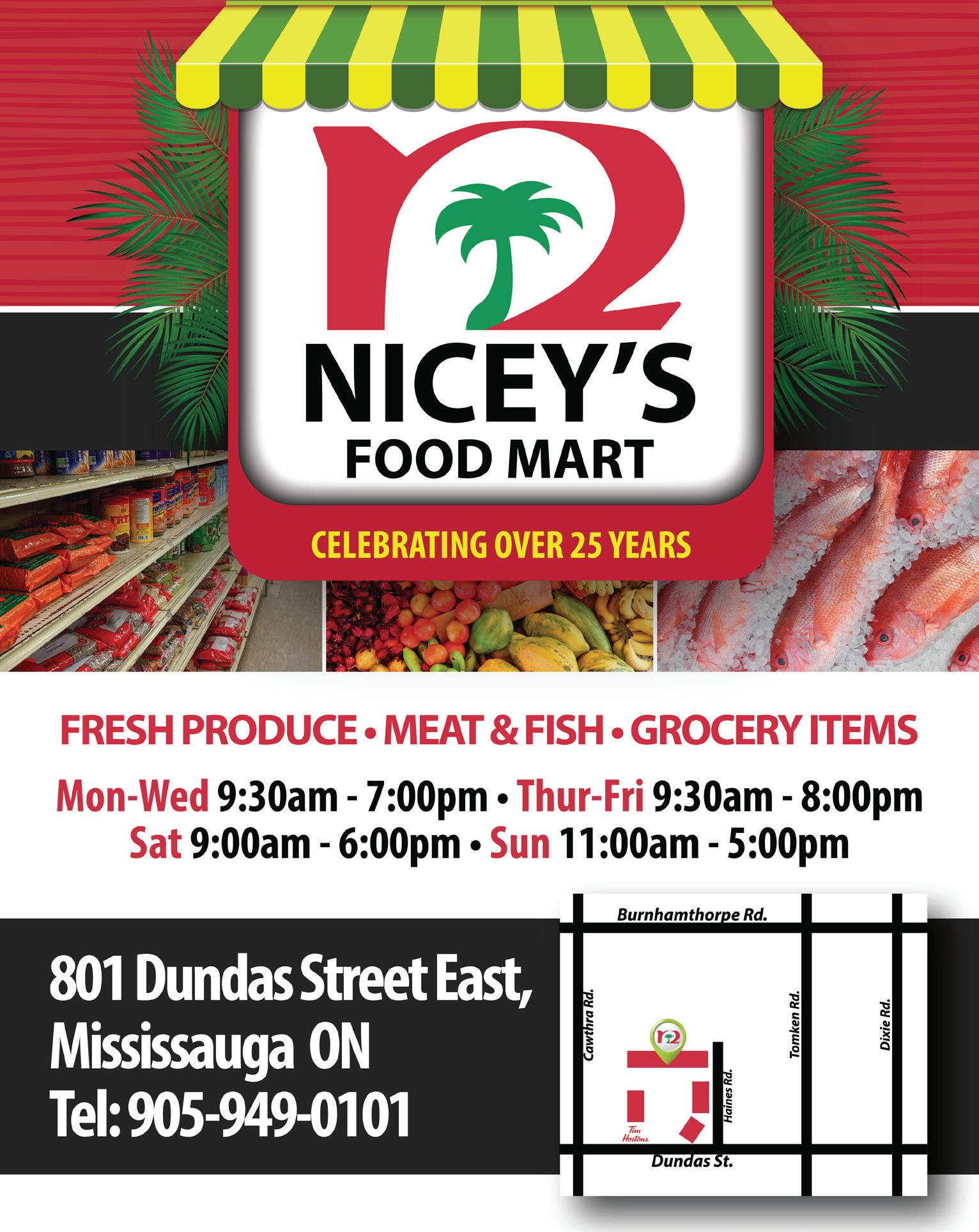
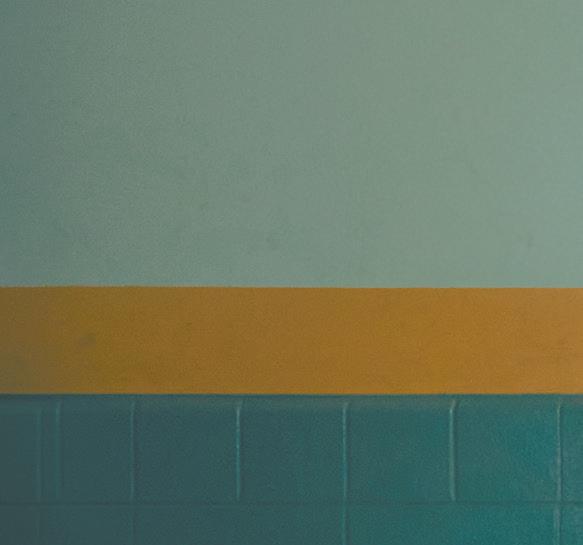




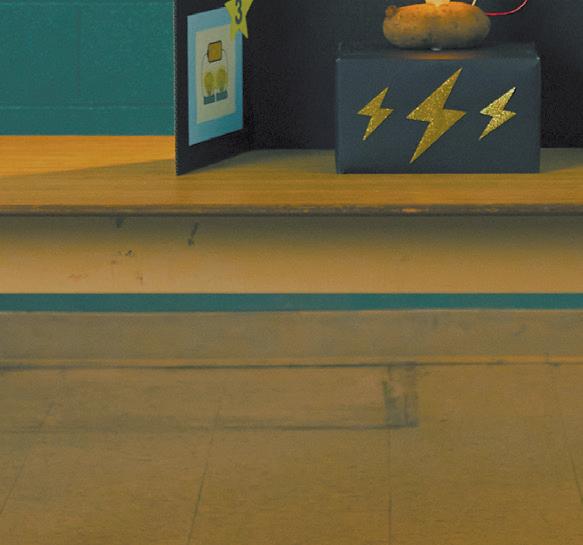


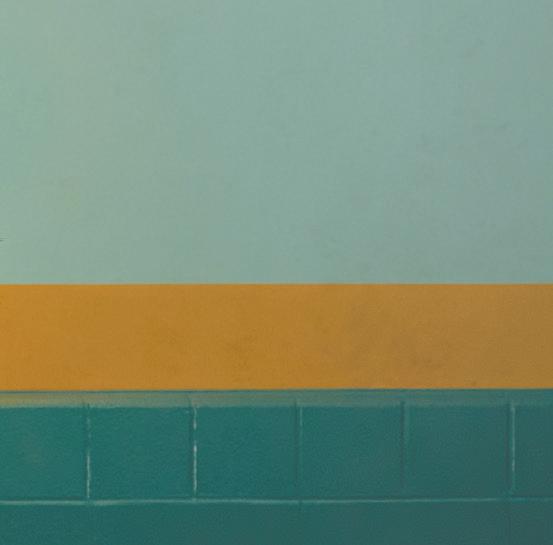
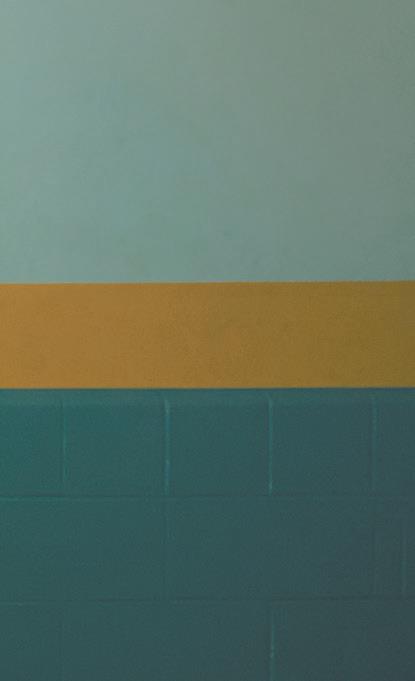

















His smooth voice, catchy melodies, and meaningful lyrics make his music resonate with fans all over the world, and once you hear him, it is impossible to unhear him.
Gyptian, born Windel Beneto Edwards, is a highly talented Jamaican roots reggae artist who has been making waves in the music industry since the mid-2000s. Nicknamed from his habit of tying a shirt around his head and twisting his chin hair like an Egyptian pharaoh, the gifted, and conscious singer is very protective of keeping his sound 100% Gyptian.
Now, two decades into his career, Gyptian is armed with a compilation of hits and continues to innovate, building off classic roots, reggae and dancehall foundations. His catalogue has never lacked originality and has always been refreshingly absent of overt slackness and misogyny that seems to dominate reggae music these days.
Yes, one of the main reasons that Gyptian is our Classic Man this edition is because of his recent singles “Only Room for Two” and “Hot Gyal Walk Out,” that were released on May 19th, 2023, but we are going to get back to that.
Windel Beneto Edwards grew up in King Weston District, a hamlet that rises out of the mountains beyond Kingston. He was born on October 25th, to a Seventh Day Adventist mother and Rastafarian father. Gyptian will tell you that he received his musical calling at the age of seven, when he began singing in the church. Realizing his talent, his parents introduced him to talent scout and producer Ravin Wong, who became a mentor to the young artist.
Working alongside Mr. Wong and the legendary guitarist Earl “Chinna” Smith, Gyptian honed his sound at shows and in the studio. In 2005, he scored two hits with “Is There a Place” and “Serious Times,” songs that introduced him as one of the most promising roots reggae voices to emerge in the new century. Since then, the melodic crooner has captured listeners with the smoothness of his voice and the urgency of his message.
He was nominated for Best New Entertainer at the 2006 International Reggae and World Music Awards, and by then, the twenty-three-year-old velvet-voiced singer had been dominating the charts with a slew of hit singles.
His ambitions broadened and he dominated the local charts the following year with “Mama (Don’t Cry)” and “Beautiful Lady.” All four songs ended up on his debut album, “My Name is Gyptian.” His 2008 follow-up, “I Can Feel Your Pain,” also made a splash. In 2010, the global grip of “Hold You” returned reggae to the world stage. Gyptian had built a modest following prior to the song’s March release, and by the summer, he had millions dancing and singing along. His native Jamaica, of course, had seen his potential for years. The song began bubbling up in Trinidad before taking listeners in New York by storm. Then there was the Nicki Minaj remix. The track’s infectious beat, catchy melodies, and sultry lyrics swept over clubs, airwaves, and block parties across the world, claiming the title of global summer blockbuster, and earned Gyptian the “Best Reggae Artist” award at the MOBO Awards in the U.K. It climbed to #77 on the Billboard Hot 100 and was eventually certified Gold in the U.S.
The legacy of “Hold You” lives on: Pitchfork named it No. 49 on its “200 Best Songs of the 2010s list,” and ELLE listed it among the 52 defining songs of the last decade.

Never one to settle on one sound, Gyptian continued to pioneer his reggae fusion style, scoring hits with tracks such as “Wine Slow,” “Non Stop,” “Nah Let Go’’ and “All on Me.” His cornucopia of diverse tracks helped drive the artist’s streaming numbers into the hundreds of millions.
The singer and songwriter has stayed busy with recording and performing, adding to his catalogue with the recent releases “Only Room for Two” and “Hot Gyal Walk Out,” the lead singles from his upcoming album, and his first release from VP Records since 2013’s “Sex, Love, and Reggae.” The split video directed by Dameon Gayle of Warrior Films JA, caught me completely off guard, and when I sat down with Gyptian, I of course had questions for him.
“Where did this ingenious idea come from,” I queried. “It was like it was from two different minds. One moment you are about the one beautiful girl, and then boom: girls everywhere! I loved it; it is like leading a double lifestyle.”
“This track is a different side of me, a new vibe. It’s all about showing the world that I’m versatile, because there are not many artists that can do what I do. My contribution as an artist has always come from a real and authentic place. I stress ‘real’ because every song was taken from not only my experiences, but also from those around me.
Being true and relatable is and was my mission from the start, something that music has been lacking. Music is next to God; you can play a song from any artist and it can completely change your mood.
It is sad to say that music nowadays has no message; there is no substance. The message that is there is gone. Our music is not where it is supposed to be; the message is so negative. My music is meant to make you think, laugh, party, and of course make love. This album is all about love. As humans, we’re all connected. Music transcends many things, and it is an honour to serve as an ambassador, because music is life”.
Gyptian’s album is coming out soon, and fans can look forward to an active performing schedule, with upcoming show dates in: Miami, Brooklyn, and Atlanta.
I want to end this feature with a side of Gyptian that people don’t see, but truly speaks to his character. He is an individual who actively seeks to promote the welfare of others through charitable acts and contributions. He donates his resources (money, property, time) to support and improve various aspects of his community. He is driven by a genuine desire to make a positive difference in the world, and he is passionate about specific causes and works towards addressing the root causes of social issues, rather than simply providing temporary relief.
Prior to the pandemic, he was giving and generous with his funds. He has devoted his time to support children with disabilities, and during back-toschool time, he donates backpacks to students across Jamaica
By combining the power of music with the altruistic intentions of philanthropy, Gyptian has leveraged his resources, influence, and creativity to make a positive impact on society and the world. The intersectionality of music and philanthropy has offered a platform for Gyptian to join forces and contribute to causes that resonate with him, ultimately fostering social change and improving the lives of many.
The people will speak for him. His blessings don’t stop because he doesn’t stop giving.
Written by Simone J. Smith Toronto Caribbean News
His blessings don’t stop because he doesn’t stop giving
GYPTIAN (AKA WINDEL BENETO EDWARDS)









Clubs, as well as a member of the Chemical Institute of Canada and the Canadian Medical Association.
“Fortis Cadere Cedere Non Potest, (The Brave May Fall But Never Yield).”
The school was envisioned as a remedy for the social deformity in which poor Black boys were allowed primary education only, and since its inception, Kingston College’s students have produced impressive results in academic and sports fields. Over the course of years, the college has won numerous awards and championships, and till this day, Kingston College offers a wide variety of extracurricular activities and clubs, including: a football club, rugby club, track team, swimming team, basketball club, hockey club, and lacrosse team.
Yes, any young man who has attended Kingston College walks away with a sense of pride, and this week, KC Alumni, you have a lot to be proud of. KC Alumni. As a KC Alumni (1960 – 1966), there is a pride Dr. Pitter feels about the quality of education he received during his time there, and a belief that his alma mater provided him with a solid foundation of: knowledge, skills, and experiences that have helped to shape his life and his career.
He was Sergeant Major of the school’s cadet corps and was the first Jamaican to receive the Duke of Edinburgh Gold award; presented to him by the duke himself, HRH Prince Phillip, in a private ceremony at Mona Great House.
In 1975 he graduated from the University of Waterloo with a BSc. in chemistry and worked for several years as a Research and Development Chemist, before studying medicine in Mexico. He had an opportunity to advance his career and actually practice medicine in Mexico. Adding to his resume, he was a physician and nutrition adviser at Atlas
His most recent accomplishment is the 2019 establishment of his Canada-based supplement company FORTISMAGNA™. His company offers a variety of sports and health supplements for athletes to elevate their performance and achieve their athletic goals. The company draws inspiration from the food and practices of Jamaican athletes globally known for their monumental feats in speed and endurance. With over 33 years of experience in athletic performance, Dr. Pitter has been asked, and now provides answers about Jamaica’s secret for achieving monumental feats of speed and endurance.
He has formulated FORTISMAGNA™ products leveraging his vast knowledge about the Jamaican diet and using current research findings as guidelines. Jamaican athletes consume superior quality produce, with high quantities of fish, fruits, and vegetables and low to moderate amounts of meat. Their diet is high in simple and complex carbohydrates, a range of starch and fats with a small amount of protein to allow them to build lean muscle mass and excellent endurance levels.
“This is more for runners, athletes in general, but I know a lot more about runners.”
I had a chance to dialogue with Dr. Pitter, and the genesis of FORTISMAGNA™ was revealed…
“Fortis (Strong) Magna (Best) made complete sense to me because of my time at Kingston College. We were classified as the Fortis mainly because we were very good at sports.
I was at my cousin’s home one day, and I was getting assistance putting the website together. I was told that I needed to have a name for my product line. The name FORTISMAGNA™ just came to me. I can only describe the experience to be similar to a download. I remember the young man looked at me and said, ‘Yes! That is a good name.’
What some people do not know is that FORTISMAGNA™ was initially a service provider. What we did was provide options for individuals who needed surgery (let’s take for example a knee replacement sur-

gery), and could either not afford it, or had been put on an extended wait list. As a physician, I am well aware of the cost of surgeries, so I would make arrangements to send patients to Mexico, Ecuador, Columbia so that they could get their surgeries done. That was the origin of FORTISMAGNA.”
I was of course curious about his passion for medicine. Dr. Pitter shared with me a distinct memory.
“People in my town used to come to my grandmother, because they saw her as a healer. They would come to my grandmother for everything. I would look at some things (extreme sores on a foot), and say, ‘Grandma, there is nothing you can do about that.’
She would respond, ‘Yes, come go to the store for me.’
She would send me to get things, take care of the person who came to her, and in a couple of weeks, that person would come back, and the sore would be gone. I was shocked! This was when I first grew a love for medicine.”
His journey in medicine had begun.
“I had the incredible opportunity to work as an analytical and product development chemist. I studied medicine after that, and I had a chance to work in Mexico.
I did two Canadian exchanges, and two YMCA exchanges, and then I finally migrated to Canada in 1969. I studied as an acupuncturist, and also worked as a physician in Newfoundland for 16 years. I worked for the government in Newfoundland, and I did emergency work in 20 towns.”
“Dr. Pitter,” I asked, “There are a lot of supplement companies out there, what makes yours unique?”

“Well,” he replied, “There are products out there that are not tweaked; they are not efficient, or effective. My years of study have provided me with the knowledge to make these products better. I have made some great products, and I have made companies some serious money over the years.”
Today, he is excited to share his firsthand knowledge, and products to the community. FORTISMAGNA™ offers a variety of sports and health supplements in Canada, the United States, and Latin America to help athletes take their game up a notch and
achieve athletic success.
All FORTISMAGNA™ products are manufactured in the USA in accordance with FDA guidelines. They meet specifications that maximize performance outcomes. The brand covers a gamut of sports and performance supplements that are essential in an athlete’s training and journey. They are designed to drive consumers to achieve athletic goals, whether running faster, jumping higher, or lifting more.
One of the company’s most popular products, POWA Mix, is a pre-workout supplement that helps athletes: increase their energy, increase focus, maintain endurance, and promote muscle mass development while training. Unlike other pre-workouts in the market, it does not cause sleep disturbances even if consumed at the end of the day, allowing athletes to get their muchneeded rest.

Another favourite is FORTISMAGNA™ Recovery Blend post-workout supplement, which contains a high carbs-to-protein ratio of 1:1. It enables athletes to maximize muscle recovery and grow lean mass without fat gain.

In addition to helping athletes train better, FORTISMAGNA™ supplements address some other health concerns. Pro Force enables them to shed unwanted pounds safely and effectively to stay agile. Made with natural ingredients like green coffee beans, raspberry ketones, and Garcinia cambogia, it boosts metabolism, controls appetite, increases energy, and supports the breakdown of fat cells.

Their Booster Advance Immune Supplement is a multivitamin plus complex that helps build a robust immune system, and their Focus Mushroom Complex brings them the goodness of mushrooms to support brain health, promote energy levels, and improve immune health.
This company stands out as a supplement brand for athletes due to its research-backed development, the exceptional quality of its products, and proven results.
BONUS: Soon, they will also be adding gear and apparel to their online store, so stay tuned for that.
For more information visit FortisMagna at fortismagna.com

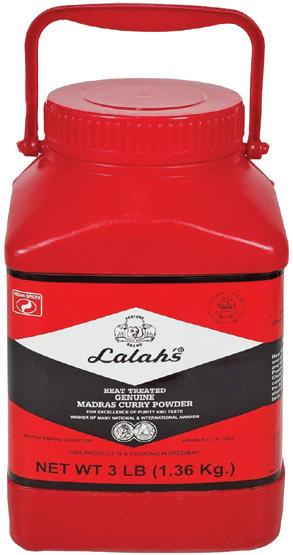






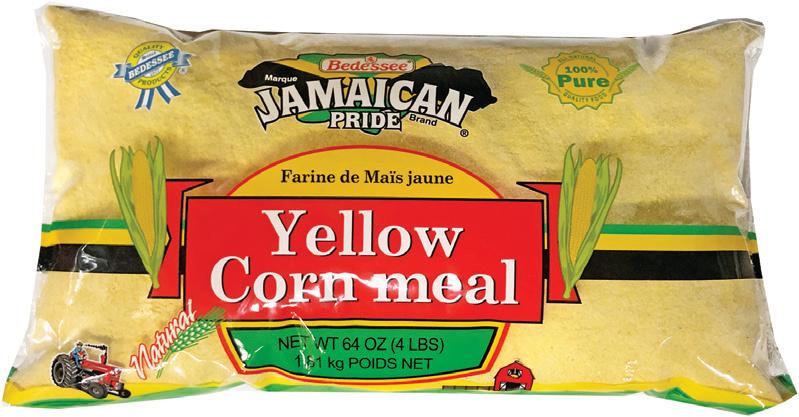


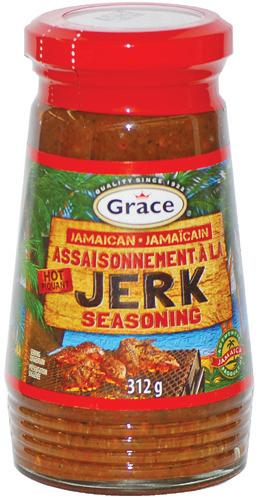

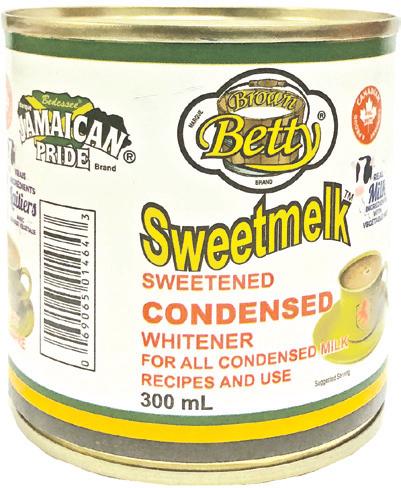



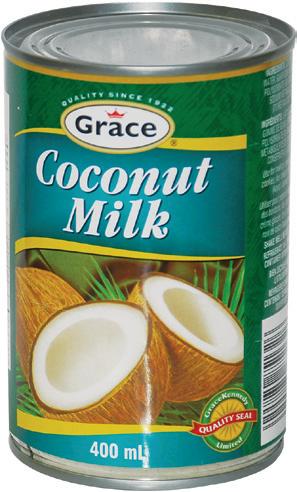



















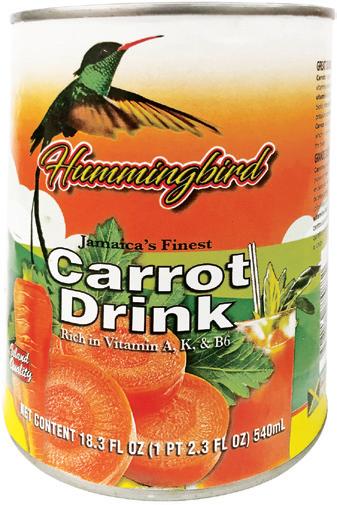















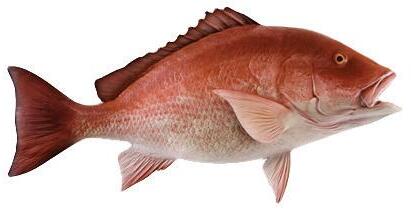
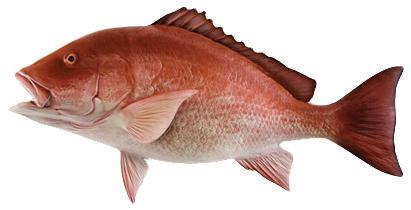






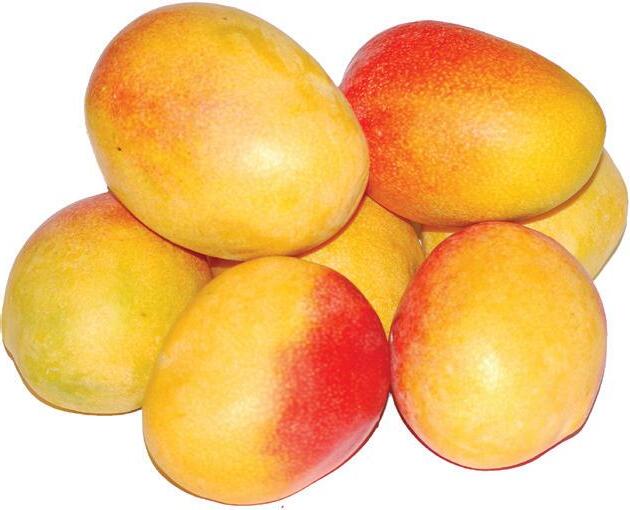

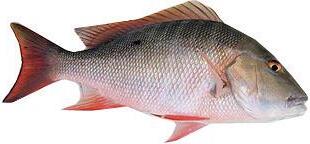


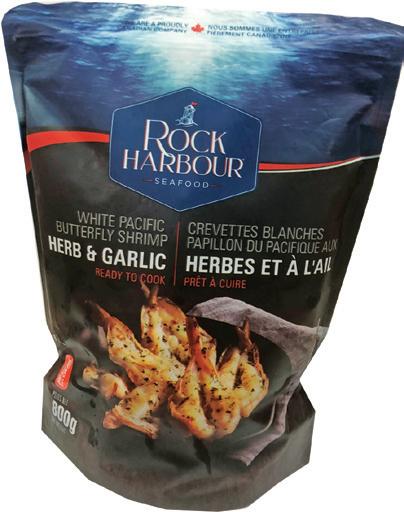



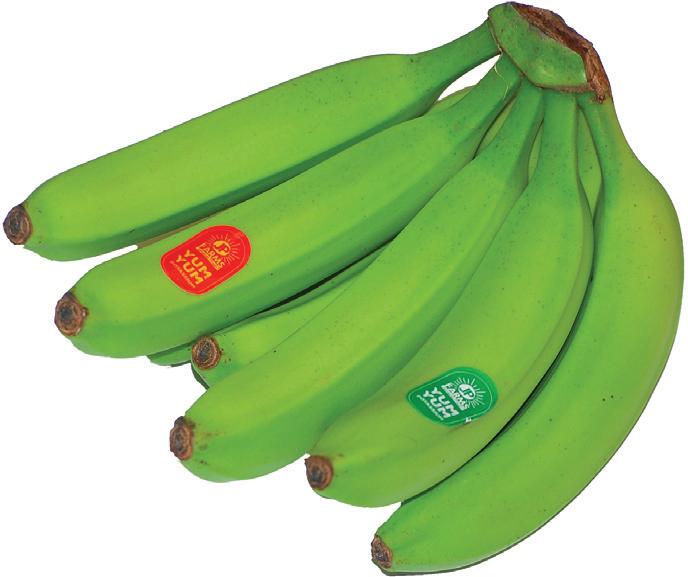
















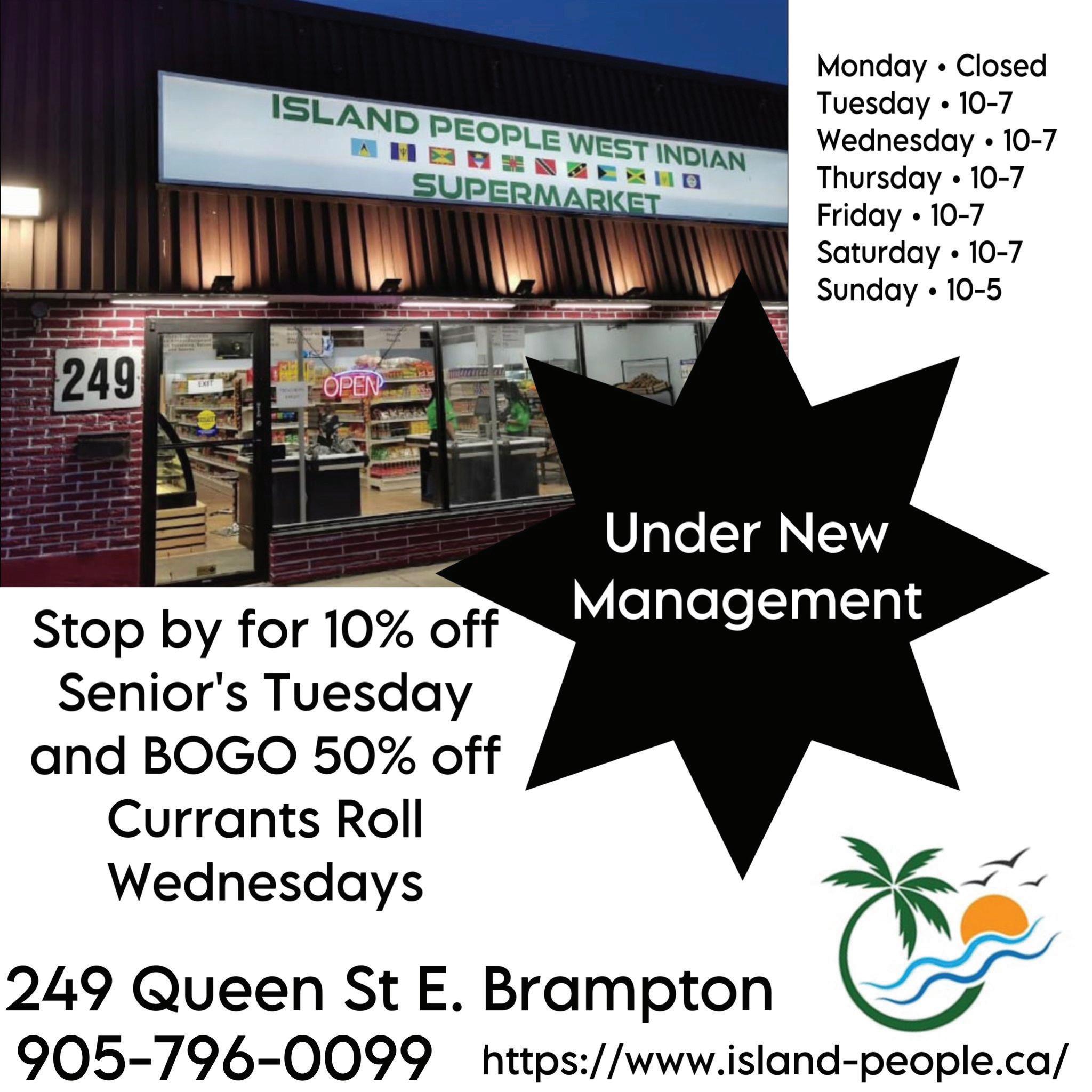




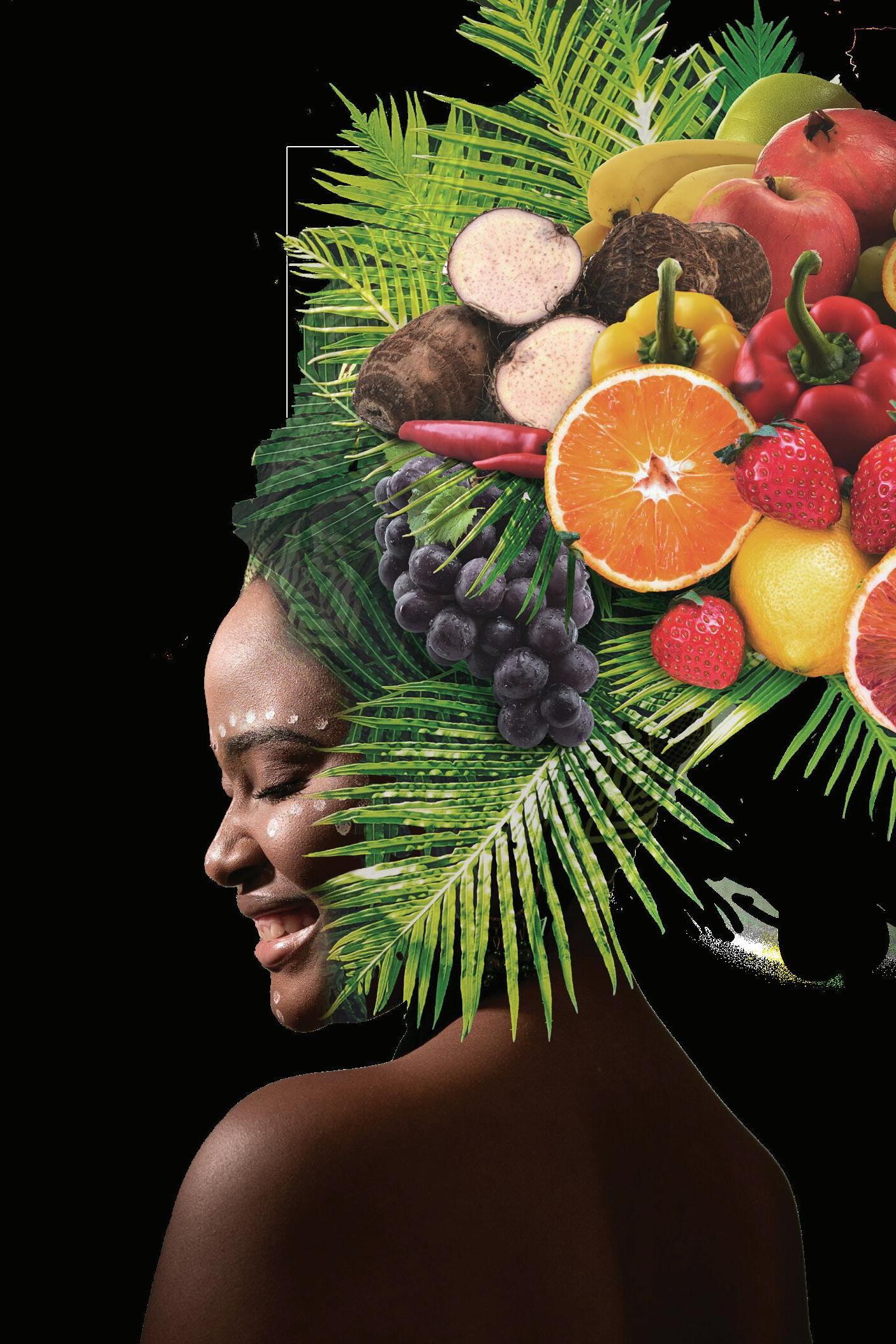
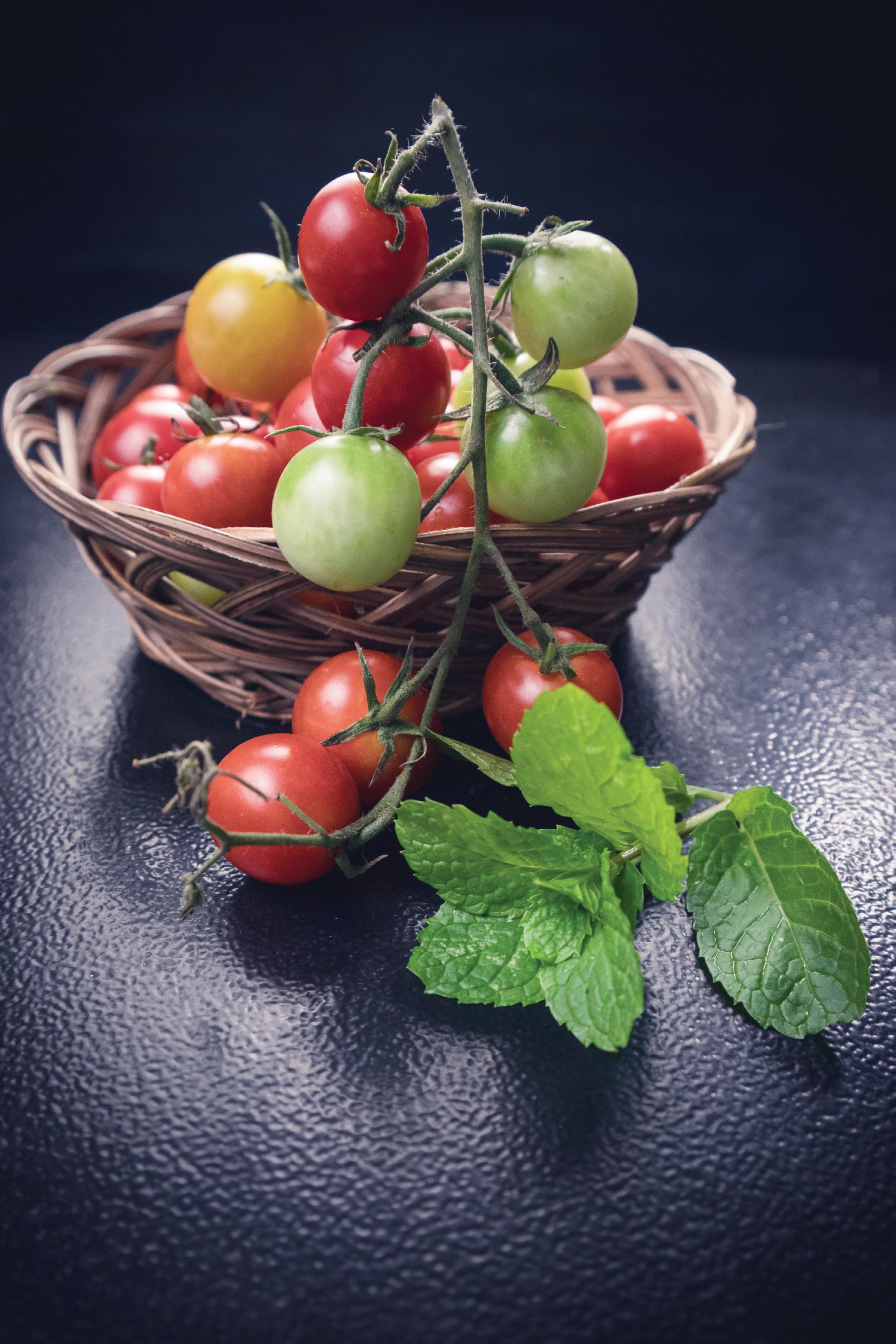





 1531 EGLINTON AVE W GREEN P CAR PARK
1531 EGLINTON AVE W GREEN P CAR PARK

lege Hospital and the University of Toronto has this to say, “Menopausal hormone therapy is the first line treatment of symptoms in the absence of contraindications.” That clarity may be overly simplified, and she adds that patients and doctors need to consider symptoms before and during menopause, and to discuss treatments based on personal preferences and potential risk factors.
younger than sixty.
Furthermore, data from the Women’s Health Initiative trial show a possible reduction in coronary artery disease with HT among younger menopausal patients, specifically those who start HT before 60 years of age, or within 10 years of the start of menopause.
ness, and joint pain.
The cognitive effects of HT are debated. Past research questioned the impact on risk for dementia. Other research found benefits including reduced “brain fog” and reduced risk of Alzheimer’s.
Surprising news in the Canadian Medical Association Journal; there’s another aboutturn among scientists studying hormone therapy (HT) as a treatment for symptoms of menopause. This time, researchers have produced findings that suggest benefits to healthy women who start HT early in the transition to menopause.
Women have long been perplexed by conflicting advice on hormone replacement, and this new study doesn’t offer universal guidance. The bottom line remains, HT is a complicated business, requiring patients and doctors to weigh many factors in deciding for, or against.
Those risk factors have been well publicized. Many studies have suggested leaning away from HT due to associated increased risk of breast cancer, stroke, and cardiovascular disease, but new findings offer important insights for younger women.
Previous studies have shown an increased risk of breast cancer in women taking HT. However, this new study reports the risk is much lower in people aged 5059 years, and in those who start HRT in the first 10 years of menopause.
Increased risk of ischemic stroke (blood clot) has been a concern for women older than 60 years who start HT 10 years after the start of menopause, but new findings suggest the risk is reduced for those

Be sure to discuss the issues with your surgeon if you are scheduled for a hysterectomy. Leaving ovaries in place can preserve natural estrogen function for a time, but removal of ovaries and use of HT eliminates any future risk of ovarian cancer. Of course, most saved ovaries do not develop a malignancy. So, sparing one or both ovaries in younger patients should be a matter for discussion.
There are other benefits of hormone therapy in the treatment of menopausal symptoms. Reducing the severity of hot flashes is the main one. Another is reduced fragility, with one large study involving over 25,000 women aged 50-79 showing that HT reduced the risk of any fracture by 28%, a major osteoporotic fracture by 40%, and a hip fracture by 34%. HT can also offer relief from mood swings, vaginal dry-
Dr. Pauline Maki is a specialist in menopause and cognition in the department of Psychiatry and Psychology at the University of Illinois at Chicago. She notes, “Women who initiate hormone therapy before their final menstrual period show increased blood flow to the hippocampus and better verbal memory compared to nonusers.”
The message is that “timing is everything” in decisions around hormone therapy.
That’s not easy to do given menopause may begin up to 10 years before the last menstrual period and can last more than 10 years. For some women, the symptoms are intense. Others never know the menopause has come and gone. So, get informed guidance from your doctor and start the discussion early.

































TRISHA SMITH
trishas@carib101.com
SAKRED SYNERGIDeep within the rich tapestry of Caribbean culture lies a misunderstood and demonized spiritual practice known as voodoo. Rooted in African traditional religions, voodoo represents an integral part of the Caribbean heritage. However, over the years, the West has exerted its influence, poisoned the minds of Caribbean people and disconnecting them from their birth right and ancestral power.
Being of Jamaican descent I would always hear the word Obeah and Voodoo used inter-changeably. It was a bad thing used to harm people and/or exert power over another. I would hear stories of people going blind; people having bad luck follow them and even people dying! I was told to stay away from anyone who used any sort of oils, powders or an-imal

parts to do spells and ritual work, because their intention was to only bring harm or co-erce people into a never-ending cycle of monetary obligations. It wasn’t until I got into my early 20’s that I realized voodoo was an actual religion. I purchased a book called “Secrets of Voodoo: by Milo Rigaud in an effort to know the truth of what people so confidently feared. I set out on a mission to understand the voodoo religion. After months of research, watching documentaries, reading books and even meeting a beautiful sister from Benin Africa who practiced voodoo, my perspective changed, and I fell in love with the religion. I grew up in a Pentecostal church and I was surprised to see the similarities between the two.
In this article I want to explore what voodoo entails, shed light on African traditional religions, and discuss the reasons behind the demonization of these practices. Moreover, we will delve into ways in which Caribbean people can reconnect with their indigenous roots and reclaim their ancestral power.
Voodoo, also spelled vodou or vodun, is a syncretic religion that originated in West Africa and was brought to the Caribbean through the transatlantic slave trade. It combines elements of various African traditions with Catholicism and Indigenous beliefs. Voodoo practi-
RACHEL MARY RILEYrachel@carib101.com

HEALTH & FITNESS

Recently I personally have decided to include sea moss in my juices and smoothies. I went on researching the: purpose’s, benefits and differences of sea moss and Irish moss. There are some people I know have found such benefits in using this for a healthier weight loss and lifestyle journey. Let’s dive into the studies of sea
Irish moss and sea moss are often mistaken as different names for the same plant. Irish moss and sea moss are two different plants that indi-
To start, sea moss is thicker, like seaweed. It goes by scientific names like Eucheuma and Gracilaria and grows in more tropical climates like the Caribbean, southern Asia and southern Africa. You can find sea moss in a variety of colours. Most popular are gold and purple, but you can also find rare blue/green variet-
Both sea moss and Irish moss are red algae, rich in the proteins that form collagen in the body. Collagen is associated with healthy skin, joint, bone, and heart health. Whichever you use, you will have a reliable source of col-
Irish moss, scientifically known as chondrus crispus, is a seaweed with flat, fan-like leaves. It generally has a dark, purple colour, but some people bleach in the sun to get a gold variety. Irish moss grows in colder regions such as Europe, North America, Canada and Peru.
The Irish consumed chondrus crispus during the Irish Potato Famine of 1845-1849. This was a period where food was scarce in Ireland. With millions of people dying from malnourishment related diseases, the Irish turned to the sea for their food. Thus, birthing the name, “Irish moss.”
While sea moss is much more abundant and accessible, Irish moss is harder to
come by. It is quite rare that you’ll find a vendor for real Irish moss; because they are so often incorrectly exchanged, you could search ‘Irish moss,’ but you’d get results for sea moss.
Irish moss also gets a bit of a bad rap for naturally producing carrageenan. Carrageenan is an extract from the Irish moss plant that is most often used in dairy products, puddings, etc. as a thickening agent (Sea Moss Vs Irish Moss: What’s the Difference? 2020).
What can I use sea moss and Irish moss for?
• Smoothies
• Juices
• Milk
• Soup
• Porridge
How to prepare sea moss
It is important to first, clean the sea moss and remove any sea debris, dirt, or particles. When handling sea moss, always make sure your hands are clean so that you do not contaminate the sea moss and be sure to use filtered, spring, or alkaline water. Never use tap water to clean your sea moss.
I recommend cleaning your sea moss twice to make sure it is cleaned thoroughly. Simply place your dried sea moss in a large bowl, cover it with water, and massage the sea moss. Be sure to remove any visible dirt and debris.
How long should sea moss be soaked?
12-24 Hours - After cleaning the sea moss, place the sea moss in a large bowl and cover it with filtered, alkaline, or spring water. Make sure all the parts of the sea moss are covered. Then, cover the sea moss and allow it to soak for at least 1224 hours. You can leave it on the counter covered at room temperature. You do not need to soak the sea moss in the refrigerator.
Once it is done soaking it will have expanded as it has absorbed the water. It is now ready to use. You can leave the sea moss in this state and use as needed or prepare a sea moss gel (highly recommended).
Does boiling sea moss kill the nutrients?
Boiling the sea moss is a method some people use when making sea moss gel. I prefer to soak it raw to maintain the highest integrity and nutrient content. Sea moss gel is a great addition to hot drinks, and you can also add it to foods when cooking and it still provides incredible nutrient benefits (SEA MOSS BENEFITS + HOW TO MAKE SEA MOSS GEL, 2020).
tioners, known as vodouisants, revere a pantheon of deities, or loas, and engage in rituals that involve music, dance, drumming, and spirit possession. African traditional religions, of which voodoo is one, encompass a diverse array of belief systems and practices across the continent. These religions embrace a deep connection to nature, ancestors, and the spiritual world. They celebrate the cyclical nature of life and emphasize communal harmony, healing, and balance.
The demonization of voodoo and African traditional religions in the Caribbean can be traced back to the historical legacy of colonization and the imposition of Western religious beliefs. Missionaries and colonizers, driven by a desire to dominate and control, sought to eradicate indigenous belief systems and replace them with their own. The unfamiliar rituals, spiritual practices, and deities of voodoo were portrayed as dark, evil, and backward. Furthermore, the association of voodoo with practices such as sorcery, witchcraft, and black magic further fuelled the demonization. These negative portrayals served to marginalize and stigmatize African spiritual traditions, creating a psychological barrier between Caribbean people and their ancestral power.
This does not by any means take away from the fact that rituals and spells are used every-day in a negative light, but we must understand that these same elements can be used to protect one from spiritual attacks. Spiritual protection is necessary. These same elements can be used to bring harm and if one does not understand the practice in of itself, both can look the same. You cannot know a thing, until you seek to understand it and many Caribbe-an people have failed to understand the ways of our ancestors and have demonized the very thing that could set them free.
To reconnect with our indigenous
roots and reclaim our ancestral power, it is essential to challenge the narratives imposed upon us and embark on a journey of rediscovery.
First thing is to educate oneself about voodoo and African traditional religions through books, documentaries, and engaging with knowledgeable practitioners. Understanding the historical context and philosophical foundations of these belief systems will help dispel mis-conceptions and foster respect. We can grow to foster spaces for the practice and celebra-tion of African traditional religions within Caribbean communities through festivals, healing rituals and workshops. We can also embrace and celebrate our cultural heritage by incorpo-rating African traditional elements into our daily lives through language, dance, music and more time in nature.
After my experience with Shaman Malidoma back in 2014, I have been incorporating heal-ing and spiritual practices rooted in African traditional religions in my daily life. Engaging in meditation, energy work, nature rituals and even herbalism has helped me reconnect with the wisdom of our ancestors and foster personal growth.
Reclaiming our ancestral power and reconnecting with our Indigenous roots is our birth right. Allowing the very people, who enslaved our ancestors, to dictate what we should re-gard as good or evil is blasphemy.
Never judge a book by a cover that was not painted for you to understand its contents. Do your research and seek to understand, it’s not about getting people to start practicing voo-doo, it’s about: understanding, appreciating, respecting and most of all honouring the ances-tors and their divine connection to source through African traditional religions.
Irish moss and sea moss are often mistaken as different names for the same plant
megan@carib101.com

The JUNIORS Toronto International Festival, an event that marks a stunning celebration of international culture, cuisine, and unity, recently took place in the heart of Toronto. This festival, uniquely designed for children, serves as an immersive platform that allows young minds to explore the beauty of diversity and the unifying power of food.
One of the highlights of this year’s festival was ‘The Noir Experience Food Workshop’. This immersive cooking class was aimed at bridging the cultural divide and nurturing a love for cooking amongst children. It was designed as an interactive cooking experience that saw three chefs – each possessing a unique culinary flair – leading the kids in an enjoyable lesson. It was more than just a cooking lesson; it was a cultural and sensory journey that managed to capture the children’s attention and focus. Every little pair of hands was busily involved in making a quiche topped with plantain, an activity that filled the room with joyous energy and the tempting aroma of baking.
At the helm of this extraordinary experience on day two of the festival was Chef Latonya Bentley, known for her ability to weave magic with her culinary skills. Bentley, a celebrated chef with an impressive history in the cooking world, started her career in the bustling kitchen of the Fairmont before they paid for her culinary education. Bentley’s brilliance lies not only in her innovative cooking but also in her ability to connect with her

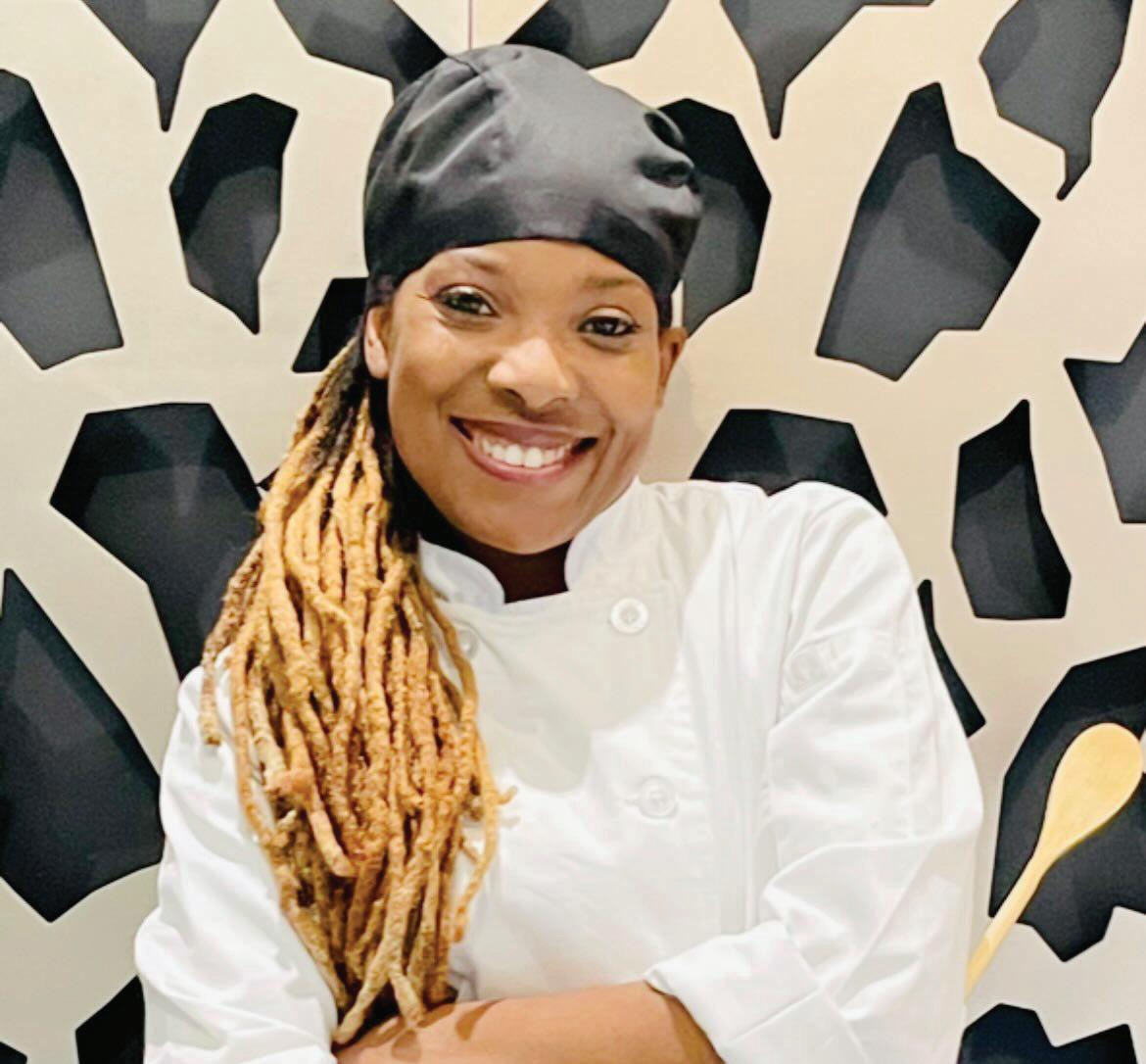
audience. Her inherent ability to simplify complex cooking techniques and explain cultural cooking differences engaged the children at the festival, making the quiche cooking experience something to remember.
Chef Bentley took the opportunity to introduce the children to the exciting world of plantains, the hardier cousin of the banana. She explained how plantains, although they look similar to bananas, are more substantial and starchier, requiring cooking before eating. She highlighted the history of plantains, tracing them back to East Asia, and added that the pairing with hardo bread makes for a delicious snack.
Keeping the spirit of the Caribbean alive, Bentley turned the cooking session into an impromptu cultural celebration. She engaged the children in a lively limbo game, picking six eager volunteers and playing the iconic Bob Marley in the background. Every participant was gifted a bag of plantain chips, symbolizing the unifying power of food and culture.
The magic continued as each child received a plantain to take home. The thoughtful gesture not only reinforced the knowledge gained about this versatile ingredient but also served as a keepsake of the unique experience.
As the session concluded, the room filled with the mouth-watering aroma of the freshly baked quiches. Bentley, with a huge smile and thumbs up, reassured the eager young chefs that their hard work had paid off. The sight of the children’s faces filled with anticipation and the aroma of success wafting through the air perfectly encapsulated the essence of the JUNIORS Toronto International Festival – a beautiful amalgamation of learning, culture, and the power of food in bringing people together.
A school is supposed to be a safe place for children and teachers. However, that has not been the case for many this year. Now and then, we’ll hear a story about an incident happening at a school. Unfortunately, we have heard about far too many schools having incidents, and this type of news can be very worrying.
The Toronto District School Board (TDSB) has seen a sharp increase in violent incidents during the 2022/2023
school year. Fights were not the only incidents happening on school grounds. Some children have brought weapons to school, and some have used those weapons on other children.
On October 31st, 2022, a shooting at Woburn Collegiate Institute claimed the life of an 18-year-old student and injured another. A 17-year-old is facing a second-degree murder charge in the case.

On February 16th, 2022, a shooting at Weston Collegiate Institute left a 15-year-old boy injured. Two 17-yearolds are now facing a slew of charges related to the shooting.
Two months after the shooting, a hold and secure happened when a group of students threatened to shoot the school. There were no injuries or arrests.
These are just only some of the
violent incidents to occur this year.
In a report, the TDSB suspended a total of 323 students between September and April for violent incidents. They also outlined a plan to address the rise in violence.
I know someone who is an educator within the TDSB. So, whenever I hear about a violent incident happening, I can’t help but worry if their school will be next.
The TDSB is not the only school district that experienced a high rise in violence. Six high schools within the Peel District School Board received threats that a shooting would occur. It just so happens to be a graduate of one of those schools.
The PDSB recently launched an investigation after receiving an anonymous letter about out-of-control violence at Tomken Middle School in Missis-

sauga. The letter states there have been incidents of vandalism, violence, and verbal abuse by students towards other students and teachers. There have been several attempts to address these issues but to no avail.
The PDSB is now addressing the matter with the superintendent appearing at the school to partake in a series of meetings with the staff as a start. There have been moments when I would miss my grade school days. However, when I would turn on the news and hear about another violent incident happening at a school, it makes me glad those days are over with all that has occurred.
As this school year ends, I can only hope that positive changes will occur during the next school year before things get worse.
BY ADRIAN REECEPoetry is an art form that is lost in the stream of time. Most people these days aren’t privy to the power its rhythm and verse hold over the senses and emotions. In the modern era, poetry is a means to make sense of the world around us; it can also provide comfort and boost moods during stress, trauma and grief. My experience with poetry has been a way to build bridges with strangers who think they are alone in this world. The thought of solitude within your emotional state can be a prison to most.
Our first-time crossing poetry is typically in school in a mundane fashion that is forced down our throats without
message or feeling. This approach generally turns the majority away from an interest in this art because it becomes a task rather than something to enjoy and let your guard down. The choice of poems is also usually difficult to interpret in language that isn’t used much in our modern-day goings and comings. This creates difficulty connecting and robs poetry of its power to evoke strong emotions and lift spirits.
Whether you purchase and read poetry books, attend spoken word performances, or listen to audio recordings, the impact on your mind and heart remains the same. The depth of effects varies, as there are a plethora of different styles and topics that a person can relate to. In many ways, absorbing poetry can be compared to an out-of-body experience of watching your feelings on display
while not being vulnerable in settings you aren’t comfortable in. Poetry anthologies are a perfect way to pour your feelings out healthily and gain insight into the mind of a person who shares your struggles.
There are so many different poetry forms: Free flow, rhyming, couplets, haikus, long-form, and nursery rhymes, to name a few. We experience most of them passively throughout our lives, but we rarely take the time to think about the way they influence our feelings and thoughts. Poetry can even introduce new unrecognizable feelings into our minds, while explaining what they mean and how they affect us on a small, or large scale. Why don’t more people use this medium? Something that is hard to do in a generation of social media and one-
minute online videos. This art form is a balm to emotional wounds and a calming, safe space in the chaos of life that occupies our lives daily.
Poems are a place to fall in love with you again and, in many ways, find yourself again. Ignorance about what it can do causes us to overlook it and even avoid it, but if given a chance, a new healthy way of healing can become a habit that protects your mind and fulfils your need for closeness and sanctity. Poetry is a lost healing art that should be tapped into for more than just entertainment. The benefits are too great to overlook, especially when it isn’t commonly explored. The world of poetry is vast, and there is something out there for every kind of emotional wound; you must find it.
steven@carib101.com
stout mind and attitude made the top list for many a partner. Yet, our lady friends were still overly influenced by the modern day image makers, the advertising and marketing firms, and one’s 1st look upon a lady was most important. Strange though, that a man’s inner being became somewhat important, yet humanity still was stuck looking at the initial visual of womanhood. Their sexiness still remained a visual indicator, followed by what they had within them, their goodness, spirit and tenacity.
The difference between how business sees humanity can be very unnerving; everything is based upon profitability. The voluptuous presented lingerie, perfumes, blouses and dresses pointing out their desired curves, while men having broad shoulders and muscles everywhere.
logical transformation, where uniforms became the point. We are all alike, set within a routine of time and place. Hairstyles changed from tall and full, to long and swinging, to short and uniformed.
The 80-90’s presented us with a transformative approach. Looks were not enough; indeed a man with good humour,
The sexual and political revolutions of the 60-70’s presented sundresses, frilly things and spectacles. Men wore jeans, work wear and tee shirts to show their searching for freedom and rebel against pretty well everything including past fashions.
The 80-90’s presented an ideo -
Something began to happen in the 2000’s, something wonderful. With the power of social media, and the response of some media to this movement (MTV), body image became something hugely personal, yet something to celebrate and promote. Celebrity and public alike showed their imperfections in body, but also their perfection in soul and attitude. Famous and not so showed their stages of pregnancy, stretch marks and all. Gay men and women came out with a flourish, not in the shadows but out into your face. What could have instigated this move from routine and likeness to something more personal and out there?
The pandemic forced many of us to stay away from others, pursue things different from our routines. We became more able, flexible; ingenious in our approach to life, relationships and the way we see others and ourselves.
The old ways had us concentrate upon the visual, thinking who was appealing and who was not through a glance, or touch. Much later what was inside of character, our consciousness, abilities and us came to mean so much more. Wanting to go on a date, you do not swipe someone to oblivion, but you meet and converse with him or her. The opportunity to find out what made them tick became the most important relational marker, not just their looks and presentation. Clothing is after all mere wrapping, with the present/gift still inside.
The iconic character George Costanza (Seinfeld) presented a seemingly unattractive package, yet when he spoke, wow how the chaos started. A man in need of: compassion, companionship, and a little training in relational etiquette, he went through life uncertain of himself, always pursuing personal vindication. The public has hopefully found themselves, their acceptance of who and what they look like being their strengths, and not their weaknesses. Truth can set you free. You just have to find that truth and accept it.
The world of poetry is vast, and there is something out there for every kind of emotional wound
The acceptance of what you look like must become your strength, and not your weakness

“I’ve been drinking more alcohol for the past five days; did you check on me? Did you look for me?" ~ Lucinda
Hmmm! I had finally returned home, and I decided to take a moment to look over the Beck’s Depression Inventory.
Questions?
• I do not feel sad.
• I feel sad most of the time.
• I am sad all the time and I can't snap out of It.
I am not discouraged about my future. /I feel more discouraged about my future than I used to be. I have no hope for the future.
I don't feel like a failure. /I feel like I have failed more than the average person. /As I look back on my life, all I can see is a lot of
failures. Hmmm! It is interesting how when you are presented with questions about yourself, how difficult it can be to answer them honestly. It’s silly because, at the end of the day, you are only fooling yourself.
Questions?
• I get as much pleasure from things as I used to.
• I don't enjoy things anymore.
• I can't get any pleasure from the things I used to enjoy.
• I don't feel particularly guilty.
• I feel guilty a good part of the time.
• I feel guilty all the time.
• I don't feel I am being punished.
• I feel I may be punished.
• I expect to be punished.
Flashforward to 2023, when I look at some of these questions, it made me reflect on my state of mind back then, and how much my mindset has changed since then. In any given moment in life, your circumstances have the power to cloud your thoughts, and take you into depths of darkness that only you will understand. Your traumatic life circumstances can indeed have a significant impact on
how you perceive and interpret the world around you. Going through the inventory allowed me to really take a look at how this experience had left deep emotional scars that altered my perspective on life.
I had spent most of my life being strong, but this situation (shake my head), had made it challenging to maintain a positive outlook. It had created a filter through which I viewed the world, causing me to focus more on the negative aspects of life.
There were so many feelings that I had involving betrayal; it had eroded my trust in others. Without realizing it, I had become guarded and found it difficult to form new relationships or rely on people. In an effort to protect myself from further pain. I had become emotionally numb, detached. Insidiously, it has become challenging to experience joy, love, or other positive emotions.
These realizations only came after going through this inventory.
Questions?
• I feel the same about myself as ever.
• I have lost confidence in myself.
• I dislike myself.
• I don't criticize or blame myself more than usual.
• I am more critical of myself than I used
to be.
• I criticize myself for all my faults.
• I don't have any thoughts of killing myself.
• I have thoughts of killing myself, but I would not carry them out.
• I would like to kill myself.
It was hard to be honest with myself, but I knew that I had to be. This experience had tainted my perspective, and only now over 10 years later, I know that the experience did not define me. It was only a defining moment. Answering these questions would get me the help that I need. With support, therapy, and time, it would be possible to heal and regain a more balanced outlook on life. It was going to take some effort and a willingness to confront and process the trauma, but it was possible to find meaning, growth, and a renewed sense of hope despite the hardships I had faced.
Questions?

• I don't cry any more than usual.
• I cry more than I used to.
• I cry all the time now.
As the tears ran down my face, I reluctantly circled (I cry all the time now).
tus symbol among European states, as overseas colonies were a symbol of power and prestige at that time. Anybody who was anybody owned one. It was this need for status that brought the United Kingdom of Denmark and Norway and the Kingdom of Sweden, perhaps inspired by the example of their tiny neighbor the Duchy of Courland, across the Baltic Sea, into the Caribbean.
From the mid-1970s to the mid-1980s there was a hit African American television series titled ‘The Jeffersons’ the theme song for which ended with the words “We finally got a piece of the pie.”
We all know that the British, Dutch, French and Spanish were involved in territorial acquisitions and exploitation in the Caribbean. What is less well known is that there were other European actors in the region who also wanted their piece of the pie.
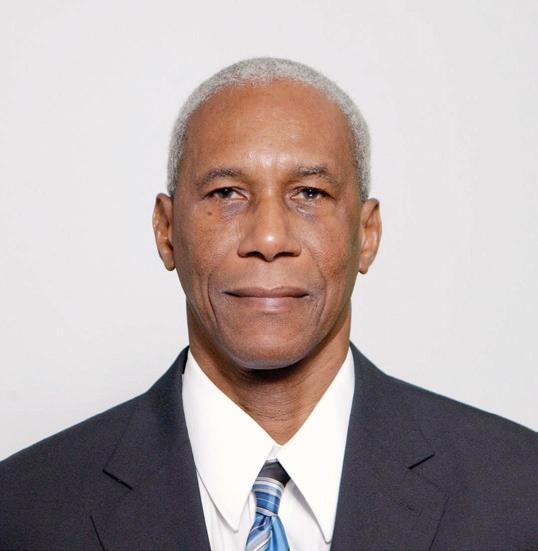
In the 17th and 18th century when King Sugar reigned supreme, owning a Caribbean colony was a much sought after sta-
Of course, by the time the Danes and Swedes entered the arena the territorial pickings were very slim, so Denmark had to settle for the Virgin Islands (consisting of the islands of Saint Thomas with 32 square miles (83 km2); Saint John (Danish: St. Jan) 1672 –1917 with 19 square miles (49 km2); and Saint Croix with 84 square miles (220 km2). Sweden ended up with tiny St. Barthelemy with an area of eight square miles in a barter deal with the French. Sweden was nevertheless able to make the tiny island profitable by turning it into a major slave-trading entrepot from 1784.
One of the most unexpected en-
trants into the competition was the Duchy of Courland, a tiny Baltic state that was part of the present day very small state of Latvia. With a population of less than a quarter of a million, and an area of about ten thousand square miles, perhaps motivated by their shipbuilding prowess and navigational skills, ships from Courland started undertaking trade voyages to the Caribbean as early as 1637, when a Couronian ship attempted to found a colony on Tobago with 212 settlers.
Although this attempt was unsuccessful, the Duchy was very persistent in its endeavors with more attempts in 1639, 1642, 1650, 1654 and 1657. They only desisted in their efforts when the Duchy was absorbed into the Russian Empire.
The surprising story of Courland's involvement in colonization in the Caribbean was the result of the outsize ambition of a single individual, Duke Jacob who ruled Courland from 1638 - 1682 and started a shipbuilding industry including building large ships, which could undertake trans-
oceanic voyages.
The Second Northern War between Sweden and the Polish-Lithuanian Commonwealth that started in 1655 resulted in a reduction in support for the colonization effort. Following Jacob's death in 1682, his successor sold Tobago to England in 1693. It wasn’t just states that made a bid for Caribbean territory. Perhaps the strangest of all was the Roman Catholic military religious order the Knights Hospitaller of Malta that decided to try their hand at the very secular business of colonial territorial acquisitions and slavery. During the 17th century (1651 – 1665) the Knights owned four Caribbean islands (Saint Christopher, Saint Martin, Saint Barthélemy, and Saint Croix) until 1665 when the Knights sold their colony to the newly formed Compagnie des Indes Occidentales (West India Company) because it wasn’t making a profit.
By the end of the 17th century every piece of Caribbean real estate had a European owner.

In any given moment in life, your circumstances have the power to cloud your thoughts
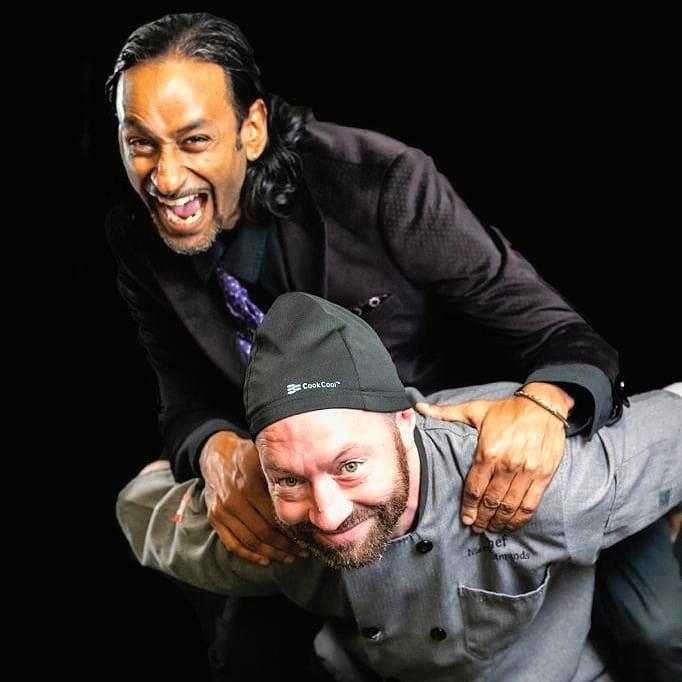 sean@carib101.com
sean@carib101.com
THE HEIGHTENED CHEF
choice first begins with choosing to grow in pots or in the ground. Pots allow for more control but require more maintenance. The ground allows for potentially larger plants and less maintenance but
gives less control. If the ground in your area is not conducive to your plant’s requirements, problems will be unavoidable. However, cannabis plants are surprisingly resilient and strive to self correct nutrient issues by digging deeper into the soil. Potted pants don’t have this luxury as they only have a certain amount of space and soil to work with.
There are countless options for soil and eventually you will find best mixtures for the plants you love but there are some common favourites that you can start with. A good combination of black earth, manure and pearlite will serve almost any cannabis plant well. Pearlite resembles small white rocks and is used to create spaces for root growth as the soil naturally compacts over time. A healthy and robust root system is key to an uncomplicated growing season and ideal harvest. If you want to go a step further, you can go to companies like Stepwell Soil who produce living soil. They cultivate super soil with helpful microbes and beneficial bacteria. By carefully measuring ingredients and delicately ageing the soil to ensure maximum growth, the need
for nutrients or fertilizer is almost eliminated.
Nutrients can make a huge impact on the growth and yield of your plant. Once again, there are a myriad of nutrients to choose from, but some basics should be followed regardless. Since you’ll most likely be consuming this plant directly, you may want to pay a little more and choose something organic. You should have two types of nutrients: one for the vegetative cycle and one for the bloom cycle. Both can come in one or two parts. Two-part nutrients offer slightly more control, but one part is obviously easier. Any other nutrients would be used to treat issues or to promote certain traits. Your nutrients should be given to your plants on a schedule for best results. Food should be given at every other watering with a scheduled blank feeding to help the plant flush out any unneeded nutrients. Be most careful not to overfeed your plants as too many nutrients can be severely detrimental.
Maintenance of your cannabis plant until harvest will come in the form of regular watering, trimming and pest
control. If growing from unfeminized seeds, try to stay vigil in identifying male plants which should be visible within the first 4-6 weeks! As my personal growing guru, Master Grower IrieMedzz always advises that when trimming to keep the bottom of your plant free of growth and the top of your plant well spaced. This encourages that nutrients are used towards large bud growth and so that air and light can penetrate as far into the plant as possible. As time progresses, your plant may require additional support as buds get larger and heavier. Planting dowels can be used to provide extra support especially during windy or extremely rainy days and avoid broken stalks. Also giving your plants a gentle shake after extended rainy periods will help prevent mold issues. Pests can be tricky to identify and remove but regular plant inspection will keep you on top of anything that doesn’t look right. Once identified, there are often many natural and organic options for pest removal. Please remember that some insects are helpful in the removal of harmful ones!
The amount of pollution generated by the tourism industry, particularly by airplanes and cruise ships, is prompting an increasing number of environmentally conscious globetrotters to rethink the way they travel. If you want to minimize the carbon footprint you make during your next vacation, here are some tips to help you plan an eco-friendly getaway.
Transportation
If you plan to travel far away from home, taking an electric car or relying on public transit can significantly reduce the environmental impact of your trip. Alternatively,
consider opting for a destination closer to home. You may be surprised by how much there is to discover within an hour’s drive of where you live.
In addition, be sure to get your car inspected and serviced before you hit the road. This way, a mechanic can adjust the tire pressure and make other repairs that improve your vehicle’s fuel consumption.
If you enjoy cycling, consider a bike tour for your next adventure. Plan a route that allows you to end the day at a comfortable inn or try your hand at bikepacking.
Accommodations
Camping allows you to immerse yourself in nature while also using less water and electricity. Just be sure to properly dispose of your garbage and bring biodegradable products such as dish soap and shampoo. Another option is to rent a room at an establishment that has an environmental certification.
Food
Buy supplies for hikes and picnics at a local farmers market, and dine at restaurants that source their ingredients from producers in the area. If you can find organic pro-

Packaging is often needed to protect food and other types of goods from impact, moisture, bacteria and damage that could compromise the quality of the product. However, if you’re an eco-conscious consumer, you should favour items made by companies that seek to minimize their environmental impact.
Solutions
Many companies have designed packaging intended to minimize their carbon footprint. Often, this means opting for less and lighter packaging. In many cases, there’s also an emphasis on using re¬cy-
From crooked carrots to asymmetrical apples, an increasing amount of imperfect produce is finding its way onto the plates of consumers. Here are a few reasons to opt for so-called ugly fruits and vegetables.
An eco-friendly and affordable solution
If you want to do your part to protect the environment, buying imperfect produce that would other¬wise go to waste can be a good place to start. In ad¬dition to hel-
clable or renewable materials, such as:
• 100 per cent recycled paper and cardboard
• Biodegradable polythene film
• Recycled polyethylene terephthalate (rPET)
• Polyvinyl alcohol (PVA)
• Recycled polystyrene foam
• Bio-based materials (corn starch, cellulose, sugar cane, algae, etc.)
• Sustainable inks (water-based, natural polymers, etc.)
Additionally, reusable packaging is increa-
singly popular. This gives these containers — be they bags, boxes or bottles — a second life that helps keep them out of landfills and recycling centres. The next time you go shopping, take some time to consider the environmental impact of the packaging used for the products you want to buy. You can also consult the manufacturer’s website for more information to help you make an informed decision.

ping save the planet, you’ll also save mo¬ney. This is because ugly fruits and vegetables tend to cost less than their shapely counterparts.
It’s also worth noting that most physical imperfections have absolutely no effect on a product’s taste or nutritional value. Sure, it might be trickier to peel and chop misshapen produce, but practice makes perfect. Next time you’re shopping for fruits and veggies, keep an eye out for less-than pretty items that are still entirely edible.
Whereas food loss occurs when farmers can’t sell produce due to its appearance or for other reasons, food waste refers to goods thrown out after they’re purchased by grocery stores, restaurants or consumers.
ducts, all the better. Most importantly, avoid eating at fast food chains that give out single-use packaging and utensils.
People of all ages can enjoy a variety of recreational pursuits that don’t have a negative impact on the planet. For example, you could hike in the mountains, observe wildlife, tour an organic farm or go padd¬ling on a lake.
Happy travels!
Golf tourism has exploded over the last few years. In 2023, thousands of golf tourists are expected to travel to well-known courses to enjoy their favourite pastime and experience a fun-filled vacation. Here are a few tips to ensure your next golf trip is as enjoyable as possible.
• Survey the weather. The elements can have a significant impact on your golf game. Therefore, make sure you inquire about the weather conditions at your destination and choose the right time of year to visit.
• Research the course. Visit resort websites and scour the internet for honest course reviews from experienced golfers to avoid disappointment. Moreover, make sure you choose a facility suited to your experience level.
• Find out about attractions in the area. Although golfing is the primary reason for your visit, choosing a location with nearby attractions you can enjoy when you need a break from the fairways is a good idea.
Finally, make sure you learn about the golfing etiquette, dress code and rules at your destination to avoid making a faux pas.
5 POPULAR GOLF DESTINATIONS IN CANADA
Are you ready to pack your golf bag and explore some of Canada’s most famous golf greens? Here are five must-visit golfing destinations.

1. The Rockies
2. Mont Tremblant
3. Columbia Valley
With more than 2,000 golf facilities, Canada is the third-largest golfing nation in the world.
Spring is in the air, so golf season is just around the corner! Here are a few tips to make your transition back to the green as seamless as possible.


1. Strengthen your muscles. Develop a consistent workout routine to help you improve your performance and reduce the risk of injury. Look up golf-specific exercises and stretches to make the most of your time.
2. Practice your short game. Set up an area in your home, like your basement or garage, where you can work on putting and perfecting your golf swing. Your goal should be to practice at least half an hour a week.

A good pair of golf shoes can go a long way to improving your game and increasing comfort while walking long distances on the course. Here are five things to consider when choosing a new pair.
1.Material. Leather is the most popular material choice because it’s breathable, flexible and stylish. Many leather shoes also come with a waterproof lining. Gore-Tex has many of the same benefits as leather but comes with a higher price tag, which may be worth it if you often play in wet or cold conditions. Polyester shoes are
ideal for occasional golfers looking for value.
2. Style. Golf shoes range in style from Oxfords and sneakers to sandals and boots. The first thing to remember is that many golf courses have dress codes, so not all kinds may be suitable. Additionally, consider the golfing you do. For example, sneaker-style shoes may be great if you’re a casual golfer. If you often golf at business meetings, you may want to choose a more upscale style.
3. Spiked or spikeless. The
decision between spiked or spikeless shoes comes down to climate and landscape. For instance, if you play in wet environments or on hilly courses, the enhanced grip of spiked shoes is hard to beat. Spiked shoes can be heavy but provide excellent overall support. Spikeless, however, are lightweight and can be worn off the course.
4. Laces. Traditional laces are the most popular because you can easily exact the fit of your shoe. However, Velcro fastenings and mechanical fittings are gaining popularity for their ease of use.
5. Size. Golf shoes usually fit tighter than everyday shoes to keep your foot secure and close to the ground. You should have no pain or pressure when walking and have about three to five millimetres of toe space.
Visit your local pro shop for personalized advice and fitting recommendations.
3. Invest in a golf club fitting. Using custom-fit equipment for your golf game can significantly improve your experience. A professional can help you find the right clubs for your swing, body type and ability level.
4 Re-grip your golf clubs. Slick or worn grips can cause control and accuracy problems. Therefore, hiring a golf retailer or qualified club fitter to re-grip your wornout clubs is an excellent idea.
It may also help to watch online videos, attend a golf training seminar or play a few casual rounds at your local golf course. You’ll improve your game and keep up with the latest rules.
Tenant Board.
The GTA rental market is rattling. The combination of high levels of immigration, steep borrowing costs, and low inventory are sending rental prices higher from pre-pandemic to now; the cost of renting jumped by 41% in the GTA. An average two-bedroom condo is renting for around $3,200.00 plus monthly hydro. When a tenant adds hydro and insurance, the total is around $40,000 after-tax dollars in a year-ouch!
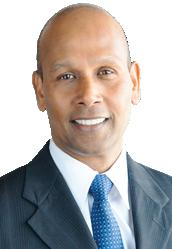
A challenging market situation will drive rental prices even higher. With interest rate hikes, some would-be homebuyers choose to rent instead of buy because they can no longer qualify for a decent mortgage. With escalating rent costs, some tenants are revisiting the option to buy. There is a significant shortage of properties for sale as well. With a dribbling supply and an insatiable demand, prices for residential properties are ascending. With escalating rent, the new rental increase guideline is confusing to landlords and tenants alike. The rent increase guideline is set every year based on inflation. For 2023, the rent increase guideline is 2.5% for rental properties built before November 15th, 2018. This guideline is the maximum a landlord can increase most tenants’ rent for a given year without approval from the Landlord and
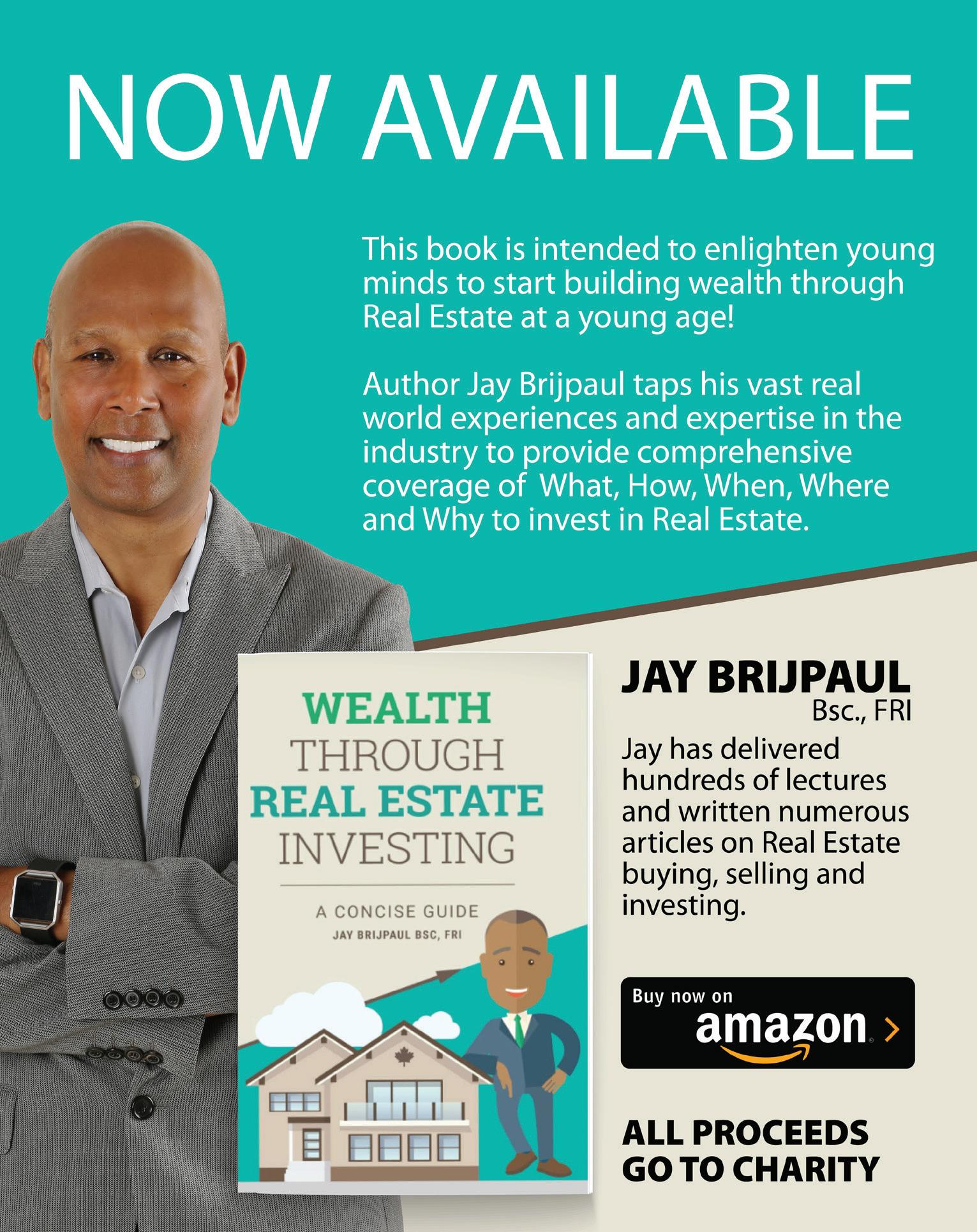

New buildings, addition to an existing building and most new basement apartments occupied for the first time as a residence after November 15th, 2018, are exempted from rent control. Landlords should keep records such as building permits, occupancy permits, and other documents as proof. In section 15 of the standard Ontario lease, landlords should include that the unit is not subject to rent control.
Here is an example of how to calculate the rental increase. Suppose you signed a lease on July 1st, 2022, for $2,000.00. Since the guideline for 2023 is 2.5% the monthly rent can be increased by $50.00. A landlord can increase the rent on July 1st, 2023. Landlords must give a tenant written notice 90 days before July 1st, 2023, using the N1 form from Tribunals Ontario’s website at www.tribunalsontario.ca/ltb/forms.
If a landlord gives an improper notice or rent increase above the guideline, a tenant has 12 months to file a complaint to the Landlord and Tenant Board. Landlords and tenants can negotiate a rental increase above the policy for additional facilities or services such as air conditioning, parking, and internet access.
The recent spike in rental rates leaves many landlords with underperforming properties. Some landlords seek reasons to evict tenants so that they can rent the property at a much higher rent. One reason for eviction is constant late payment of rent. A landlord can also evict a tenant in good standing if they want to use the unit for themselves or a family member, or if they are selling the property, and the buyer wants it for their own per-

sonal use. If a landlord is evicting a tenant for personal use, the landlord must give the tenant a minimum incentive of one month’s rent.
Supposing that a landlord chooses to renovate a unit and require vacant possession, then after renovation, the landlord must offer the tenant to rent back the property at the same rent they were paying before. If a landlord fails to give a tenant the first right of refusal to rent the renovated space, the tenant has a twoyear window to file a claim with the Landlord and Tenant Board.
The Landlord and Tenant Board can fine landlords or purchasers who evict tenants for personal use and then rent the property to someone else. The
fine for acting in bad faith for an individual is now $50,000, and for a corporation, $250,000.00. The same penalty applies to renovations. Along with the fine, the Board can order a landlord to pay the difference between the last rent charged to the former tenant and the former tenant’s current rent for up to 12 months, plus reasonable out-of-pocket expenses such as moving and storage.
The rental guidelines are constantly evolving, and it’s difficult for landlords and tenants to keep up with the pace. My advice is to respect each other. A tenant should endeavor to take care of the landlord’s property, and a landlord should take care of the tenant.

Perennial herbs are easy to grow, enhance your cooking and return year after year with little effort. Here are four hardy herbs to try growing.
1. Chives have a mild onion flavour, similar to leeks, which enhances the taste of soups, dips and ba¬ked potatoes. Beyond extra watering in sweltering weather, chives need almost no attention.
2. Oregano is a Mediterranean must-have. Its mellow, earthy flavour goes well with various dishes, including pizza, pasta and vinaigre¬t¬tes. Oregano happily grows in the ground or a container.
3. Thyme is a grassy herb with floral notes. It holds its flavour in cooking, pairing well with ingredients like garlic, olive oil and tomatoes. Thyme is relatively drought-tolerant and trouble-free once established.
4. Mint is a tenacious herb with a robust, refreshing flavour that complements lamb dishes, peas and cocktails. Mint can be invasive, but you can contain the spread by growing it in pots.
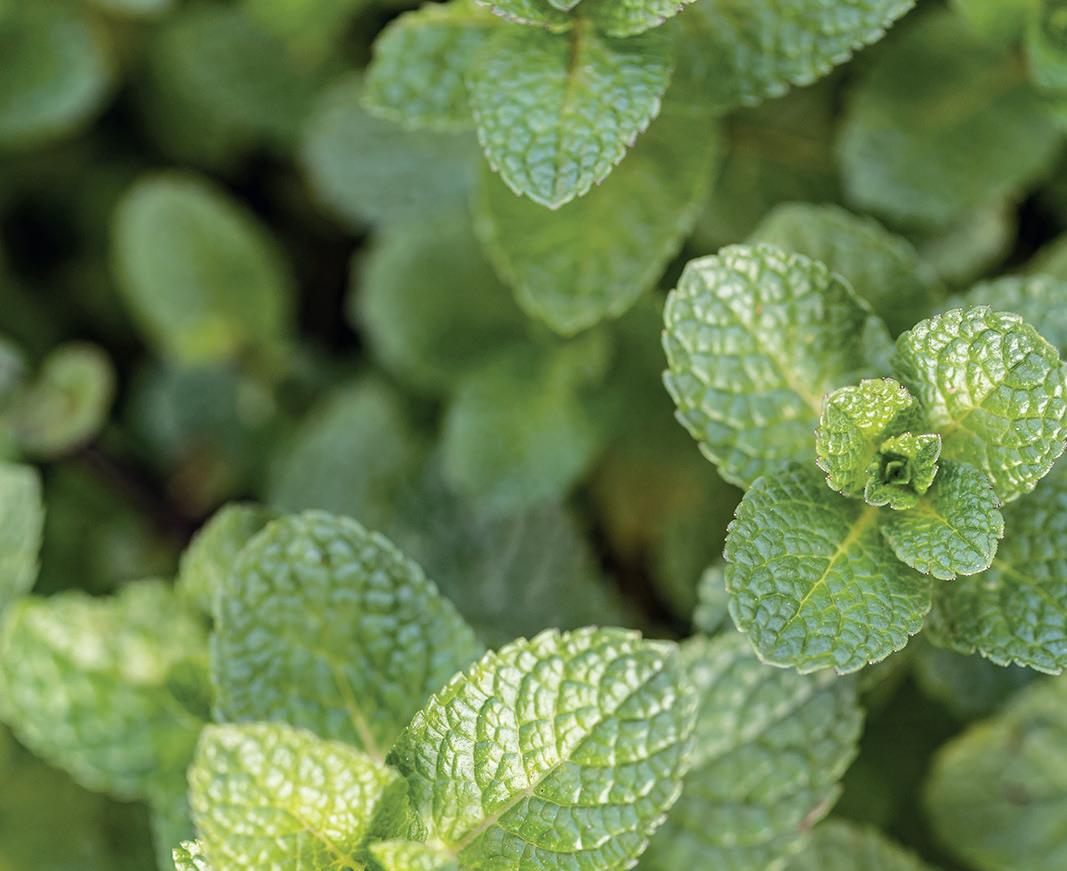
Pick up everything you need to start your perennial herb garden at your local plant nursery.
Do you want to add plants to your yard to make it more attractive? Flowers are an obvious choice, but conifers can add striking contrast. Whether you choose standard size, bushy or dwarf, here are some of the advantages of planting evergreens:
• They shelter your home from cold winds, reducing your heating costs
• They attract pretty birds to nest or take refuge
• Many species can be pruned into elegant shapes like cubes, spheres and cones
• Unlike deciduous trees, which lose their foliage in winter, conifers retain their beautiful colour and volume all year
• Planting several conifers together can increase privacy in your yard and block out sound

• Many types of conifers are edible and have medicinal properties
Cedars, spruces, false cypresses, junipers and pines — visit your local nursery to find the ideal conifers to enhance your landscaping.
Warmer days are around the corner. Are you dreaming of renovating or decorating your deck? Here are five trends that may inspire you.

1. Indoor furniture. Outdoor furniture is becoming increasingly similar to what you’d find in your home. The main difference is its ability to withstand the elements.
2. Fun textiles. Decorate with various fabrics and textiles, using cushions, rugs, sunshades, throws and hammocks to optimize your comfort.
3. Plants, plants, plants. Bring your deck to life with greenery. Choose hardy plants that will beautify your yard — and make you feel like you’re on a tropical holiday.
4. Eco-responsible materials. Recycled and environmentally sustainable fabrics, wood and other building materials are definitely in this year.

5. Modular furniture. Many garden furniture retailers sell
sofas and tables that you can configure in multiple ways, so you can readily adapt your deck to your needs and desires. Finally, neutral colours, like grey, black and brown, remain a winning choice for outdoor materials and furniture. Add personality to your deck with accessories like lanterns and LED lights.
Each
WEEK OF JUNE 4 TO JUNE 10, 2023
The luckiest signs this week: AQUARIUS, PISCES AND ARIES
ARIES
You’ll oversee a meeting at work. It’ll allow you to show off your skills and get that longcoveted promotion. The full moon will give you something to celebrate.
TAURUS
Summer holidays are coming up fast, at least for your children. This will take a lot of the stress and responsibility off your shoulders and allow you to enjoy the present moment.
GEMINI
You’ll spend more time than expected on a project close to your heart. You may need to talk openly about your relationship if there’s uneasiness between you and your significant other.
CANCER
You’ll make agreements with new clients that will satisfy you. You have a keen eye for detail. This full moon could affect your energy levels; don’t overdo it.
LEO
You’ll put in extra hours at work, allowing you to bank holiday time. Reward yourself with a bit of luxury.

VIRGO
You’ll make important decisions about your professional future and health. You’ll try a new routine that aligns with your aspirations and produces results.
LIBRA
The full moon will encourage deep conversations with friends and fa mily. At work, effective communication will help you overcome a dif ficult situation. You must adopt a healthier diet to improve your well being.
SCORPIO
You’ll suppress your feelings this week. However, talking about how you feel can be liberating. It’ll allow you to purge negative emotions and regain a sense of wellbeing.
SAGITTARIUS
You may discover a mistake on an old bill that helps you solve a bud get problem. You may have to renegotiate with a client at work, or they could change their mind.
CAPRICORN
You’re full of ideas and initiatives. However, you won’t be able to sa tisfy everyone. The full moon will cause some confusion at work and elsewhere.
AQUARIUS
You may need a second cup of coffee to help you concentrate on all the tasks you have to get done. Confusion will run rampant this week, making it difficult to be understood.
The full moon will stress you out! That’s why you need to let go, grab a friend and visit a massage therapist or spa to relax
LAND FOR SALE IN TOBAGO: 10500 Square feet near Mount Irving Golf course. Approve by Town and Country Edward 647218-1333.
2009 JEEP CHEROKEE: 4x4, extremely great condition, certified in January, keyless entry. Asking $7000 selling as is. Call 647-8584660
FOR SALE: Homes for saleLange Park, Chaguanas, Trinidad - 3 bedroom, 2 bathroom, fully a/c 400k CAD. 437-929-6750
Homes for sale Felicity, Chaguanas, Trinidad - 2 storey main road property, 3 bedroom, 1 bath, 2 attached apartments 400k CAD. 437-929-6750
HIRING NANNY: Looking for a nanny East York region for a 1 year old, light housing cleaning and cooking, 3 to 4 days a week. contact 647-739-2743
HIRING: Looking for a helper to do general labour, garden cleaning, landscaping, and winter snow removal. Cash paid weekly. Located at Morningside & Lawrence in Scarborough. Please call: (416)269-5174.

Some restrictions may apply. We reserve the right of refusal.

Laparkan is looking for a Warehouse Associate in Shipping and Receiving.
No experience necessary. Will train on the Job.
Send Resume to hrca@laparkan.com or call 416-292-4370
SHARED ACCOMADATIONS:
1 Bedroom available in basement apartment with Side entrance Shared accommodation, Male only , No parking, no smoking or drinking Everything included. $900. Medowvale and Sheppard Call 647-447-2377
LOOKING FOR A JOB: 29 years old male looking for a looking for a job. Sanjay 437-484-5151
SUNDAY SERVICE: Fountain of Truth Ministries Pastor: Reverend Maxine Campbell Worship Address: 2170 Kipling Avenue, Etobicoke Percy Johnson School – Cafeteria Sundays: 10.am – 2. pm Teaching, Worship, Ministering For info call: 416 748 0211
MISSISSAUGA: Mississauga Missionary Baptist Church invites you to join us at 1620 Dundas St West, each Sunday at 10am for praise, worship and in-depth Bible teaching with Pastor Sean, 416-219-9137
We are in the process of expansion and constantly looking for the best of the best! Dedicated salespeople; people interested in opportunities to help others while also being able to help themselves. For more information, please contact Trish 647-722-6298 or trish@carib101.com




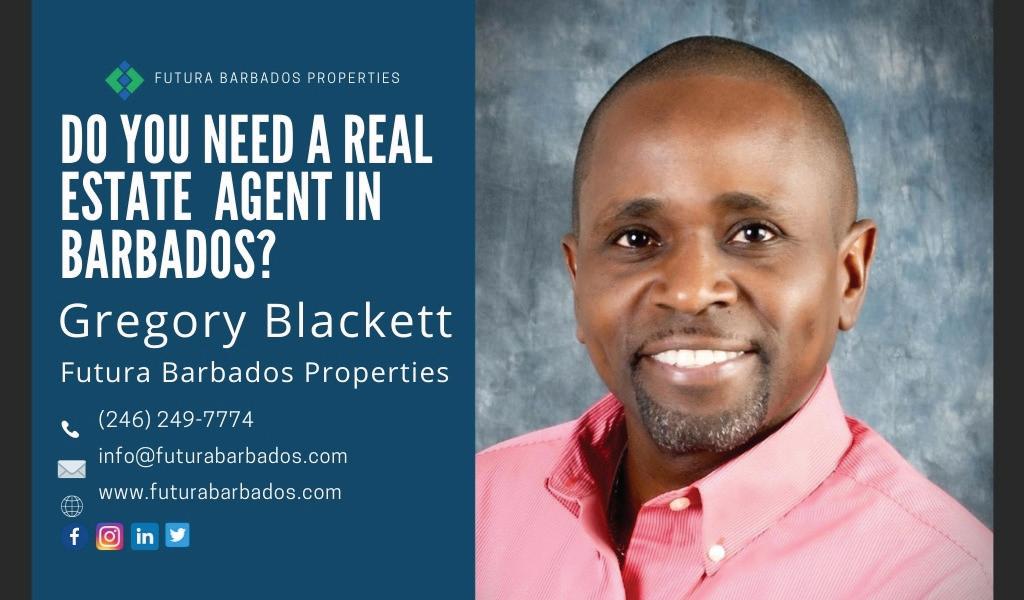
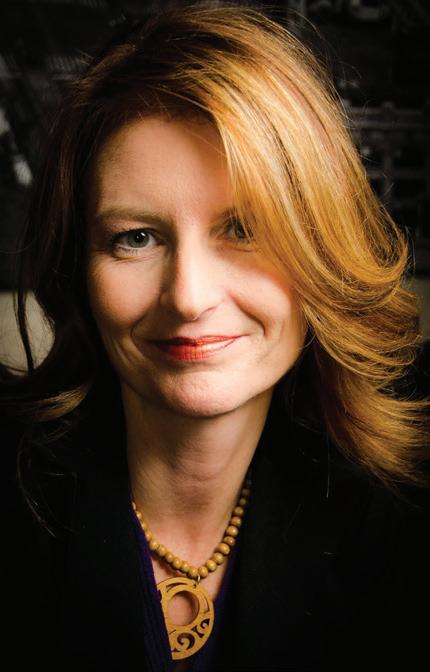

























When you first decide to get financial help from a professional, it can feel a little bit like alphabet soup. CFA, CPA and CFP all sound very similar, but they all represent different paths business professionals can take. Knowing who can do what is a great help when trying to figure out which kind of financial professional would work best for your needs.
• A Chartered Financial Analyst (CFA) is a professional credential awarded by the CFA Institute. To earn a CFA, one must pass three exams that cover
everything from business ethics to financial instruments. CFAs often work with large corporate accounts.
• A Certified Public Accountant (CPA) tends to focus on issues related to taxes or other assessments of financial information. A CPA must pass the Uniform Certified Public Accountant Examination.
• A Certified Financial Planner (CFP) is a credential issued by the CFP Board of Standards. They tend to be generalists that can help with retirement or stock investments, for example.
There are many different kinds of adviser. What’s important is that your adviser is held to a high professional standard. You should also know whether the person you choose to do business with collects an hourly fee or a commission. Advisers whose paycheck depends on continually selling you a product for a commission might have a conflict of interest with your finances compared to those who charge by the hour.
Like your house or your coin collection, your car is an investment because it can be sold for a lot of money should you ever need it. That being said, unless it’s a classic car that is in high demand, used cars will virtually always sell for less than new ones. Here are three easy ways to protect your car from excessive value loss:
1. Do your research
Protecting your investment starts before you’ve even made a purchase. Not all cars are the same. Determine what you’ll need from your vehicle and which vehicles are
made for that job before going to a dealership. Do you live in the country or the city? Will you be taking your car on long family trips or just occasionally going to the grocery store? These different needs will require different vehicles.
2. Buy a car for substance, not style
Many people love cars and want to buy the one that looks the best and newest. This isn’t always the best idea investment-wise, however. Knowing that your vehicle will withstand harsh Canadian winters is more financially important.
3. Regular maintenance is your best option
Once you’ve made your purchase, treat your car like an investment. Don’t wait for something to go wrong; get your car regularly checked by a professional.
From a financial point of view, what’s important when choosing and maintaining a car is picking the one that’s right for you rather than the one your neighbours will envy.
Credit cards have become an important part of our lives, and an increasing number of Canadians rely on credit to get to their next paycheck. Depending on how you use your credit cards, they can be either a help or a hindrance. Here are three signs that your credit card use might be a problem:
1. You regularly miss your payments
Everyone makes mistakes and occasionally has a difficult month. But if you’re often unable to pay at all, or if you can’t pay more than the minimum each month,
your debt will grow and your credit score might suffer.
2. You use your credit card impulsively

It’s nice to treat yourself to a luxury every once in a while. If, however, you have no overall spending plan or find yourself unable to control impulsive buying habits, your credit card may quickly become a financial liability.
3. You have a lot of credit cards
Not everyone knows it, but, under the right circumstances, having an unusually
high number of credit cards can hurt your credit score. Transferring your balance to a card with a lower rate can be a good idea, but if you’re simply extending your line of credit with each new card, it may become a problem.
Credit cards are convenient and can make our lives easier. If you don’t pay attention to all of the fees and interest rates that you have committed to, however, debt can become a burden you will spend years trying to remedy.
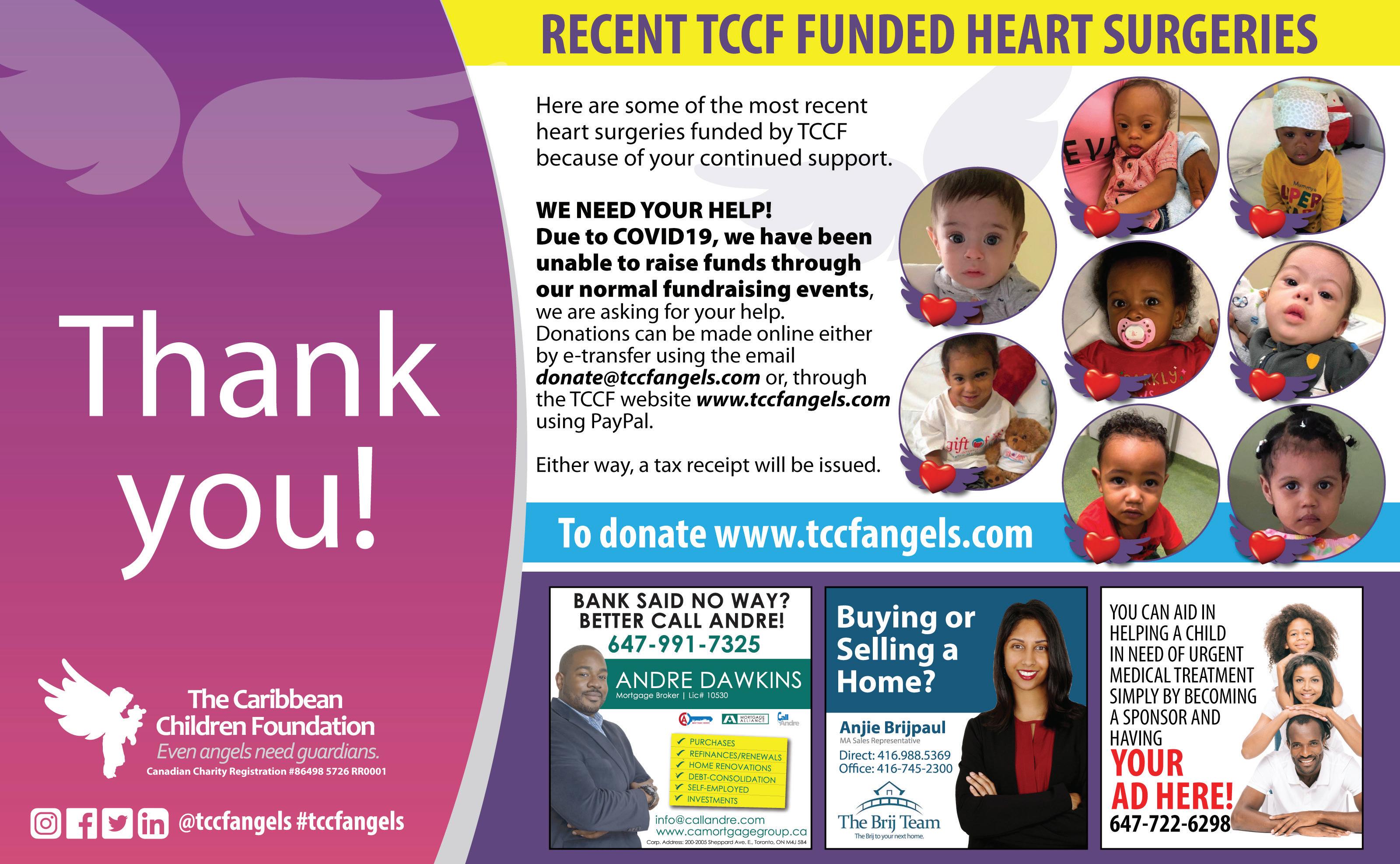









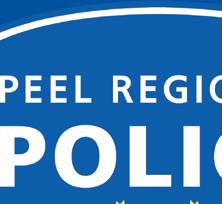






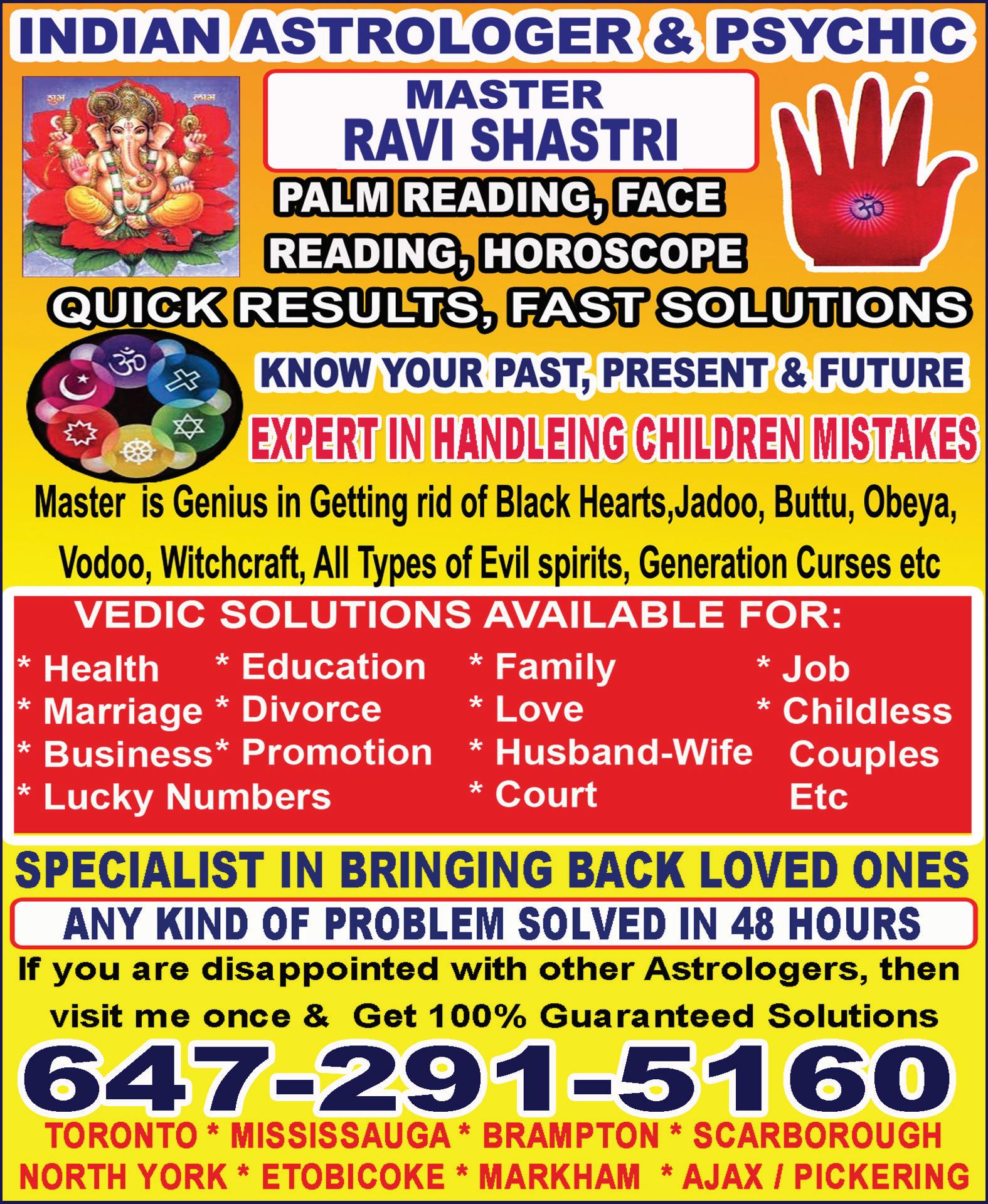
Located between the transmission and driveshaft of a car’s driving wheels, the differential is one of the most important components of a car’s engine. It performs the critical job of automatically dividing the power from the engine so the car’s wheels can spin at different speeds when you make a turn.

When you turn left, for example, the right wheels on your car have to travel further than those on the left. The differential’s gearing system automatically sends more power to the wheels with less traction (in this case, the right wheels), so that your turn is as
stable as possible. When it comes to vehicles with four-wheel-drive, there’s an additional differential that separates the front wheels from the rear wheels to improve handling when driving over uneven terrain.
Since the differential helps you stay safe while on the road, you should watch for any signs that there may be a problem. If you’re having difficulty manoeuvring your car around turns or hear loud squeaking or grinding noises coming from underneath your vehicle, you should visit a trusted mechanic immediately.

If you drive a car, it’s your responsibility to take proactive measures that’ll increase the safety of more vulnerable road users. Here are a few tips for safely sharing the road with motorcyclists.
1. Be aware
Get in the habit of frequently checking your mirrors and blind spots when driving. In addition, make sure the road is clear before opening your car doors. Keep in mind that motorcyclists are more likely to face serious or fatal consequences if they’re involved in a collision.
2. Use your turn signals
Using your turn signals is not optional; it’s the law. Your signals let other road users, including motorcyclists, know your intentions. This provi¬des them with enough time to adapt and respond accordingly.
3. Assess situations carefully


Keep your distance and only pass a motorcyclist if you’re 100 per cent certain you won’t cut them off. For example, once you see a motorcyclist’s headlight in your rearview mirror, you’re safe to return to your original lane. When assessing a situation, remember that motorcyclists are often closer than they appear in your car’s mirrors and can reach their top speed faster than motorists.
4. Anticipate behaviours
To better anticipate a motorcyclist’s manoeuvres, learn to recognize the hand signals and driving formations they use when travelling in groups.
Lastly, common courtesy on the road is a must. Be considerate, and drive safely.








